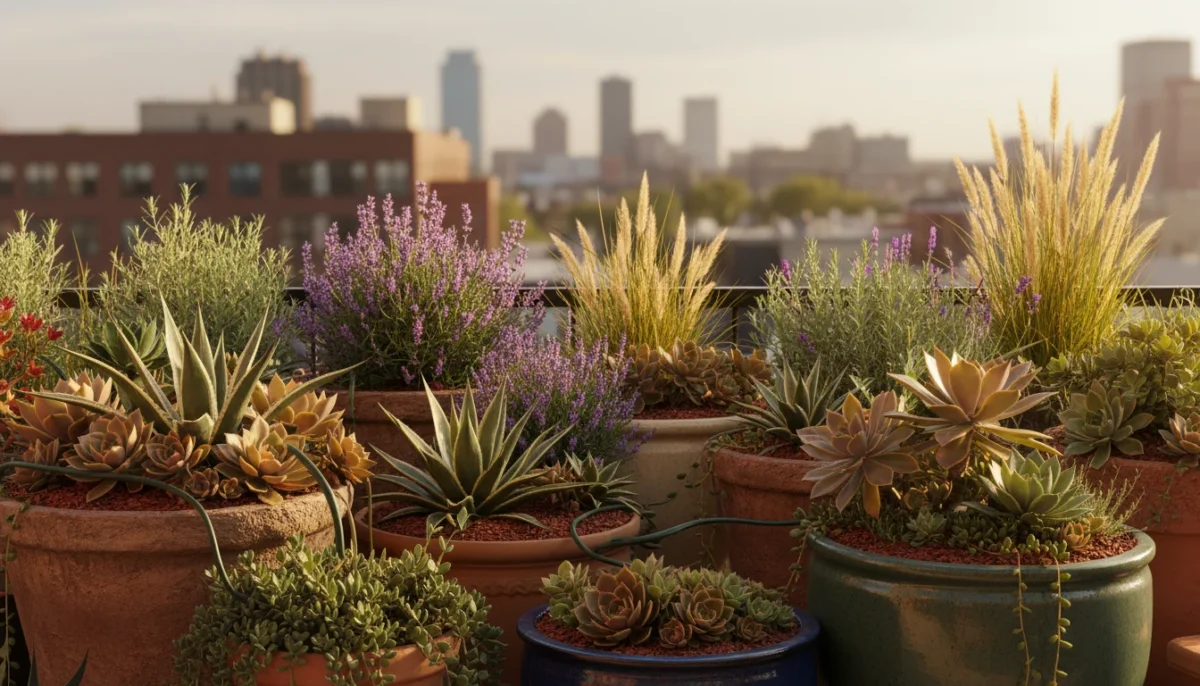Water scarcity impacts many regions, making efficient water use in our gardens a necessity, not just a preference. Even with a small balcony, patio, or compact yard, you can create a beautiful, thriving space that conserves water. This guide empowers you to transform your outdoor area into a water-wise sanctuary using xeriscaping principles. You will discover practical strategies for selecting drought tolerant plants, managing irrigation, and building healthy soil, all while fostering a vibrant ecosystem.
Xeriscaping, a term derived from the Greek word “xeros” meaning dry, focuses on landscaping with a minimal need for water. It is a smart approach for any gardener, especially those with small spaces, as it reduces water bills, conserves a precious resource, and often results in lower maintenance requirements. We will explore how to apply these techniques to your specific environment, ensuring your garden flourishes even in challenging conditions. You can create a stunning and sustainable outdoor space by making informed choices about your plants, soil, and watering habits.
For research-based sustainable gardening guidance, see
UF/IFAS Gardening Solutions — Florida-Friendly Landscaping,
The Xerces Society — Pollinator Conservation,
Pollinator Partnership — Garden for Pollinators and
EPA WaterSense — Outdoor Water Use.
Disclaimer: This article is for informational purposes only and is not a substitute for professional advice. Check local regulations before installing rain capture, using greywater, or composting food scraps outdoors.
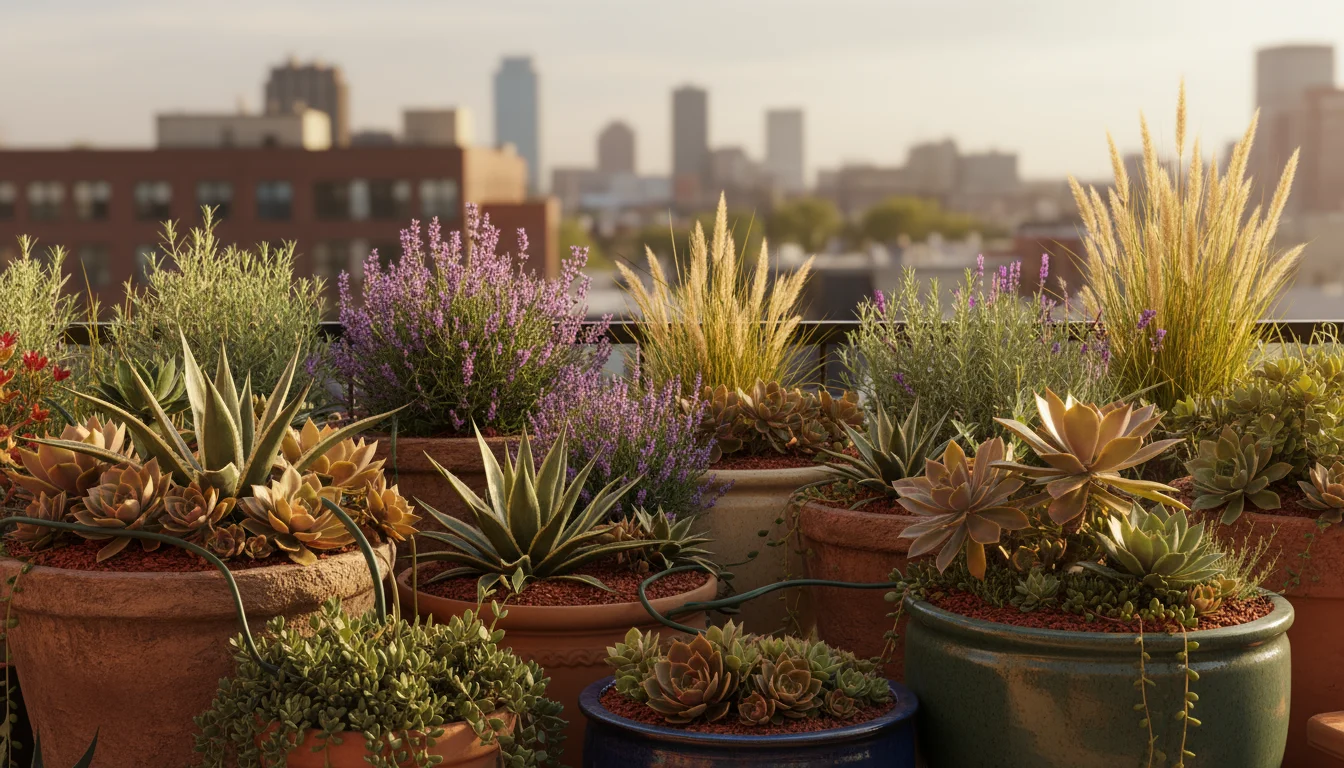
Understanding Xeriscaping for Small Spaces
Xeriscaping is more than just choosing cactus. It is a holistic approach to gardening that prioritizes water efficiency by considering seven core principles: planning and design, soil improvement, efficient irrigation, appropriate plant selection, mulching, limiting turf areas, and proper maintenance. While some principles, like limiting turf, might not apply directly to a balcony or small patio, the underlying philosophy remains highly relevant for your compact gardening efforts. You can adapt every principle to create a thriving, low-water garden in any small space.
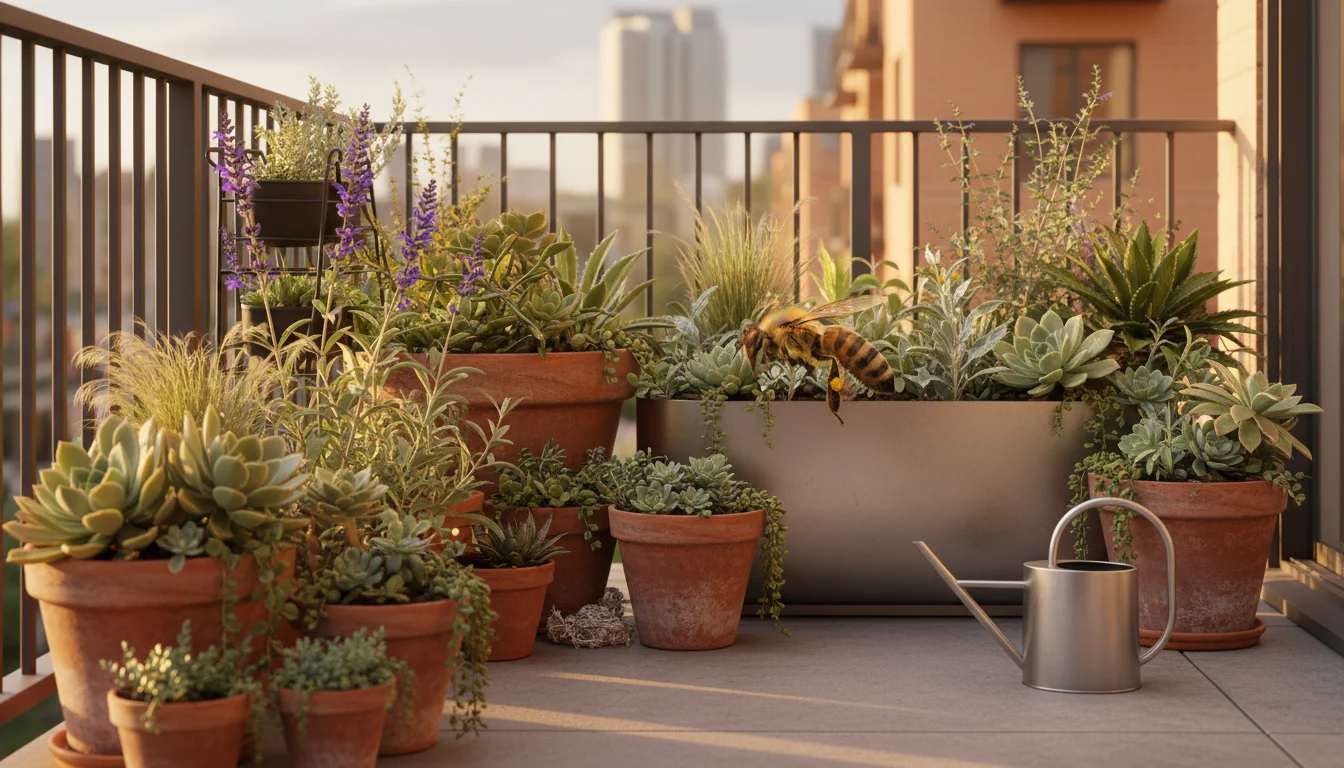
Why Xeriscape Your Small Space?
- Water Conservation: This is the primary benefit. You significantly reduce your outdoor water consumption, which helps conserve local water resources and lowers your water bill. Data from the EPA WaterSense program shows that outdoor water use accounts for more than 30 percent of total household water use on average. A water wise garden can drastically cut this.
- Reduced Maintenance: Drought tolerant plants typically require less pruning, fertilizing, and frequent watering once established. This saves you time and effort.
- Increased Biodiversity: By choosing native, water-wise plants, you create habitats and food sources for local pollinators and wildlife, contributing to a healthier ecosystem.
- Climate Resilience: As climates shift, gardens designed for arid conditions or variable rainfall become more resilient to heatwaves and droughts. Your plants will be better equipped to handle stress.
- Cost Savings: Lower water bills and less need for costly chemical inputs translate into financial savings over time.
Applying xeriscaping to small spaces means thinking strategically about every element. Instead of expansive lawns, you focus on container arrangements, vertical gardens, or compact ground cover. You select individual plants for their drought tolerance and beauty, ensuring they thrive with minimal intervention. This approach makes sustainability an achievable goal for every gardener, regardless of their space constraints. You gain a beautiful garden and contribute positively to the environment.

Designing Your Water-Wise Garden
Effective design forms the foundation of any successful water-wise garden. Before you buy plants or potting mix, take time to assess your space and plan. This initial effort saves water, money, and frustration in the long run. You will create a garden perfectly suited to its environment and your lifestyle.
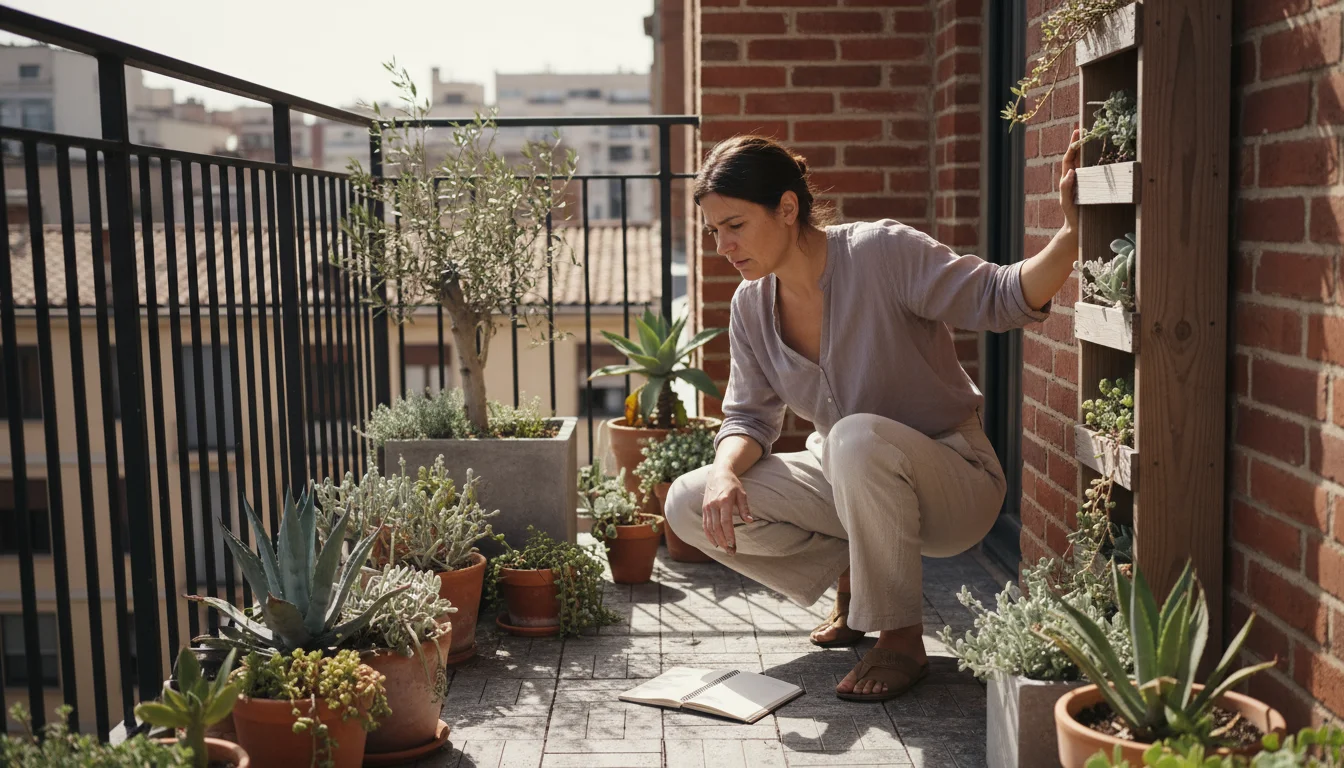
Step 1: Understand Your Microclimates
Even a small balcony has distinct microclimates. Observe your space throughout the day and across seasons.
- Sun Exposure: How many hours of direct sun does each area receive? Is it full sun (6+ hours), partial sun (3-6 hours), or shade (less than 3 hours)? Note how the sun shifts throughout the year.
- Wind Exposure: Is your space exposed to strong winds, especially on a high-rise balcony? Wind accelerates water evaporation from plants and soil.
- Heat Reflection: Do nearby walls, concrete, or metal railings absorb and radiate heat, creating hotter zones?
- Drainage: Where does water naturally pool or drain? This impacts container placement and plant health.
Mapping these conditions helps you select the right plants for the right spot. For instance, a west-facing balcony might be ideal for heat-loving, drought tolerant plants, while a shaded corner could house plants that tolerate less light and require slightly more moisture.
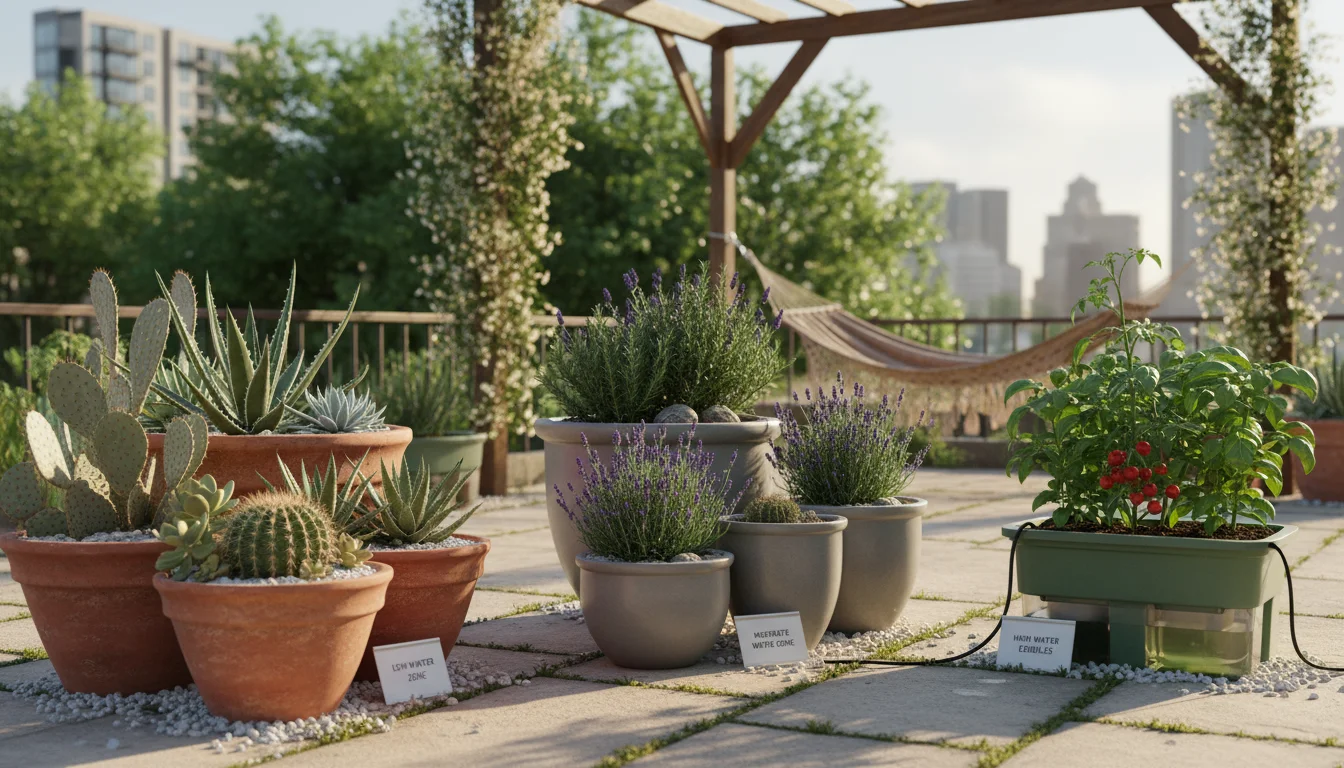
Step 2: Group Plants by Water Needs (Hydrozoning)
Hydrozoning is a core xeriscaping principle. Group plants with similar water requirements together. This prevents overwatering some plants while underwatering others. You avoid wasting water by applying it only where it is needed. For small spaces, this means arranging containers strategically.
- Low-Water Zone: Plants that thrive on minimal moisture once established (e.g., succulents, cacti, many native grasses).
- Moderate-Water Zone: Plants that need regular but infrequent watering (e.g., many Mediterranean herbs, certain flowering perennials).
- High-Water Zone: Plants that require more consistent moisture (often fruits, vegetables, or certain tropicals). In a xeriscape, you limit these to a very small area or prioritize them for edibles.
Place your high-water plants closest to your water source for convenience and efficiency. Your low-water plants can occupy areas further away or those with higher sun and wind exposure.
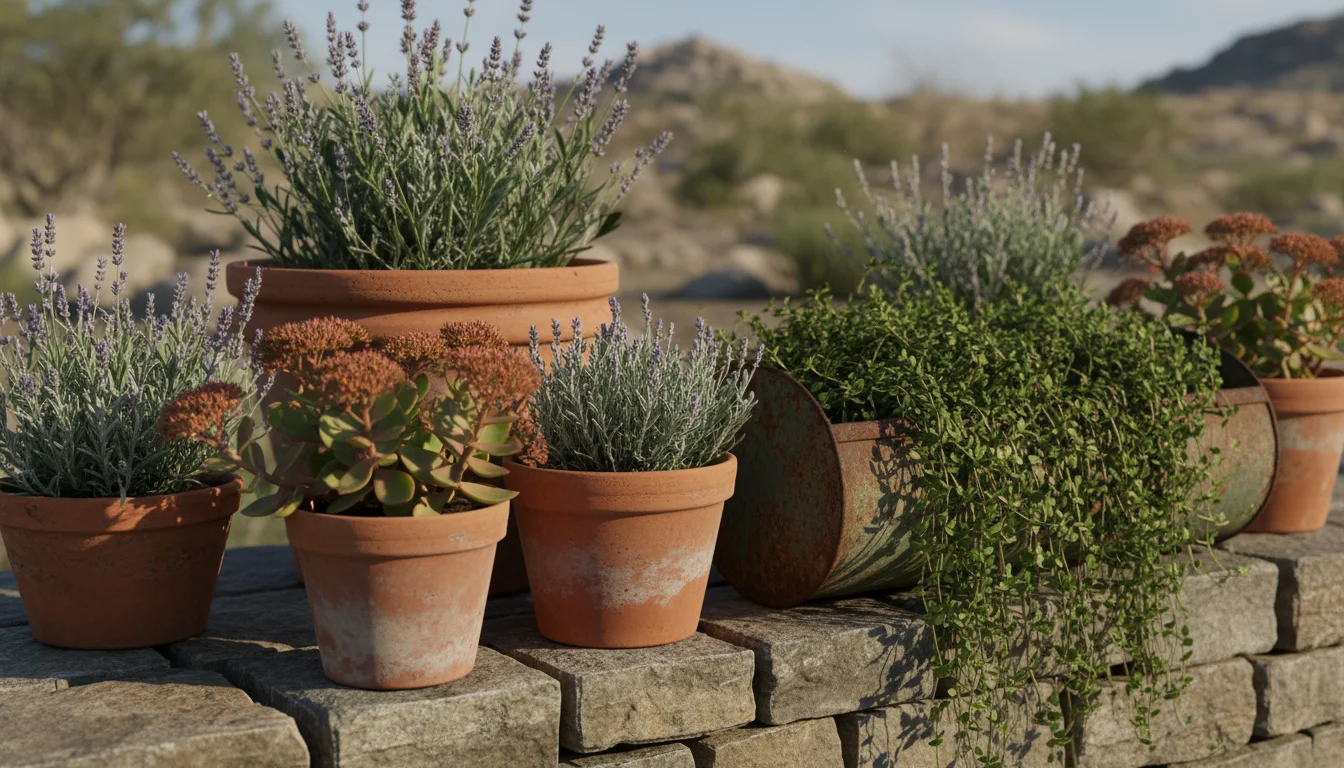
Step 3: Select Drought Tolerant Plants
This is where your design comes to life. Focus on plants adapted to dry conditions. Look for plants with specific characteristics:
- Fleshy Leaves or Stems: Store water (e.g., succulents, sedums, Portulaca).
- Silver or Gray Foliage: Reflect sunlight, reducing water loss (e.g., Lavender, Artemisia, Dusty Miller).
- Small or Hairy Leaves: Reduce surface area for evaporation or trap moisture (e.g., Thyme, Yarrow, Lamb’s Ear).
- Deep Root Systems: Access water deeper in the soil (many native grasses and perennials).
Prioritize plants native to your region. They are naturally adapted to your local climate and rainfall patterns, often requiring less water and maintenance. They also provide crucial support for local wildlife. We will explore native options further in a later section.
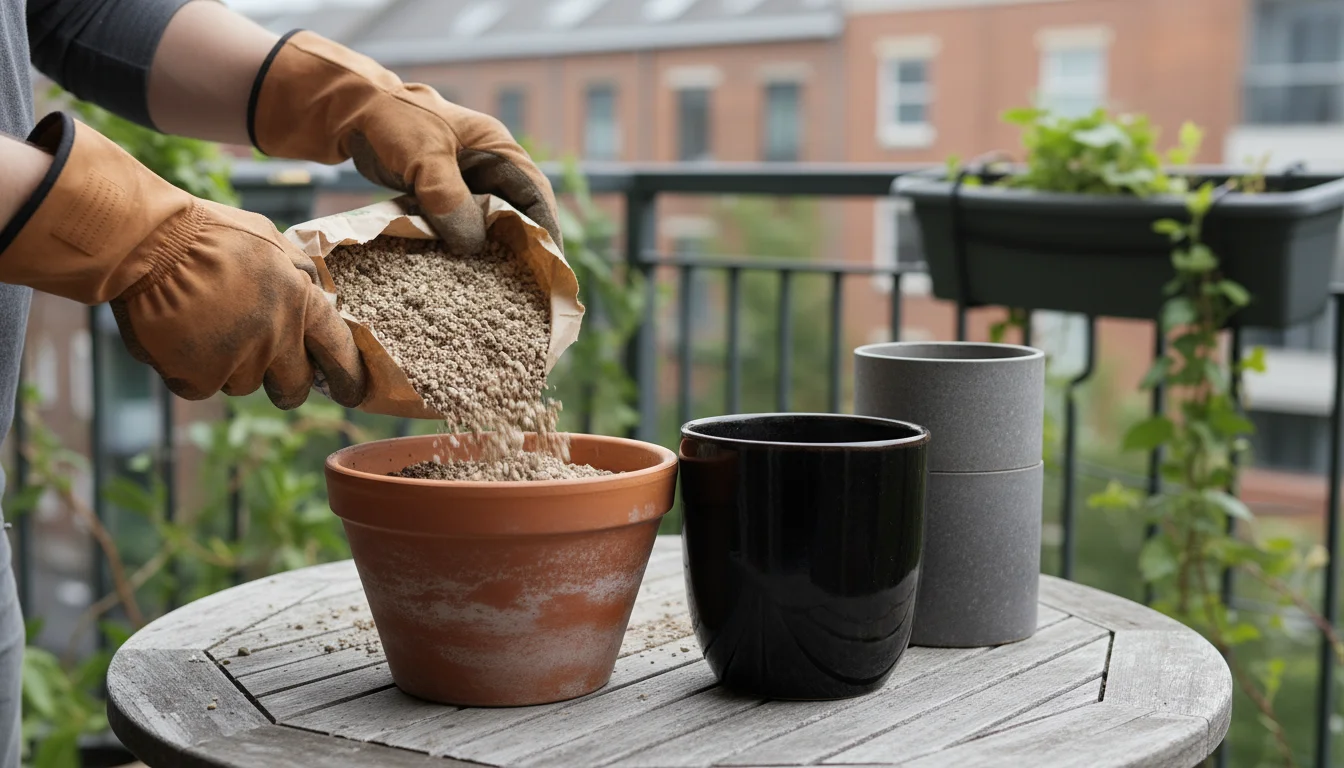
Choosing the Right Xeriscape Containers and Soil
The right containers and a well-prepared soil mix are fundamental to a successful xeriscape container garden. These choices directly impact water retention, drainage, and plant health. You have control over these elements, which makes them powerful tools for water conservation.
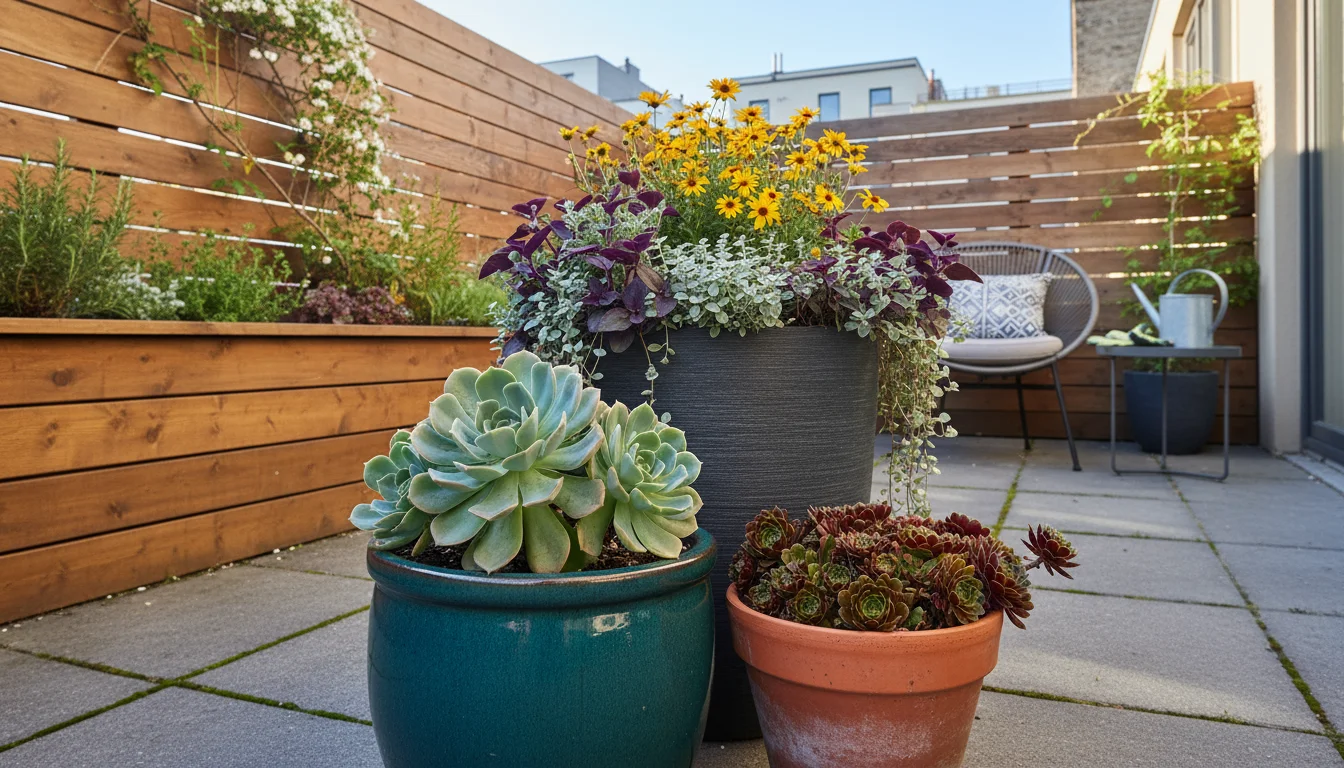
Container Selection for Xeriscaping
Your container choice influences how often you water. Focus on materials and sizes that reduce moisture loss.
- Material Matters:
- Unglazed Terracotta: While classic, its porous nature allows water to evaporate quickly from the sides, requiring more frequent watering. You can use it for very drought-tolerant succulents, but be mindful.
- Glazed Ceramic, Plastic, Metal: These materials retain moisture far better than terracotta. They are excellent choices for water-wise gardening. Recycled plastic containers are a sustainable option.
- Concrete/Stone: Heavy and durable, they offer good insulation and moisture retention, but are best for permanent placements due to weight.
- Size and Depth: Larger, deeper containers hold more soil, which means more water storage capacity. They insulate roots better from temperature fluctuations and dry out slower than small pots. A large `xeriscape container` significantly reduces watering frequency. You might use smaller pots for annuals or herbs you plan to rotate often.
- Drainage: Proper drainage is non-negotiable. Ensure every container has drainage holes to prevent waterlogging, which suffocates roots. If a container lacks holes, you must drill them yourself. A layer of gravel at the bottom does not improve drainage; it only reduces soil volume. Instead, rely on the drainage holes and a well-draining soil mix.
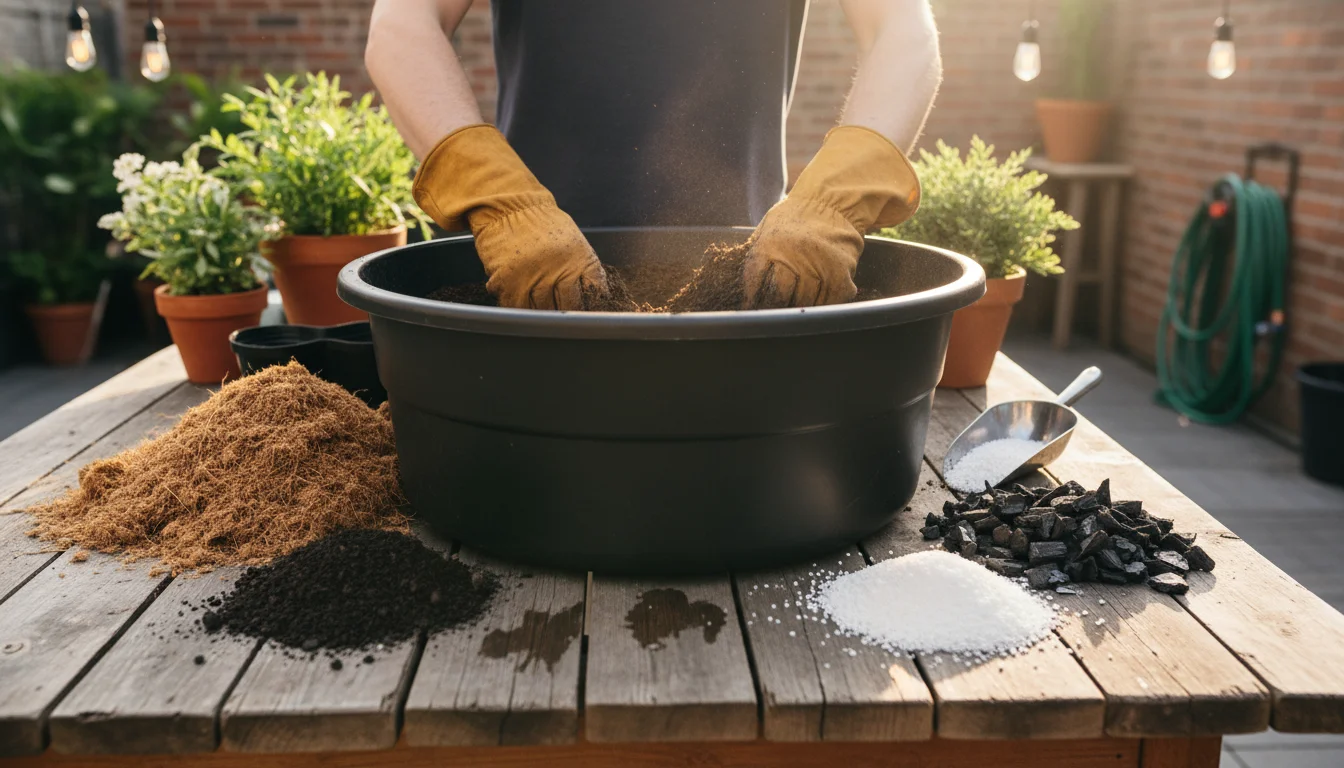
Building Healthy, Water-Retentive Soil
For `xeriscape container` gardening, your potting mix is your soil. A healthy mix balances drainage and moisture retention.
- Peat-Free Potting Mixes: Prioritize peat-free options. Peat harvesting damages vital peatland ecosystems, which store vast amounts of carbon. Sustainable alternatives include coir (coconut fiber), compost, aged bark, and perlite or vermiculite. These materials offer similar benefits without the environmental cost. You reduce your carbon footprint with this choice.
- Compost Power: Incorporate plenty of organic compost into your potting mix. Compost improves soil structure, aeration, and, crucially, water retention. It acts like a sponge, holding moisture and nutrients near plant roots. Aim for at least 20-30 percent compost in your mix. You enhance your soil’s capacity to hold water significantly.
- Perlite or Pumice: For succulents and cacti, add perlite or pumice to improve drainage and prevent compaction. These volcanic materials create air pockets, preventing root rot.
- Mycorrhizal Fungi: Consider adding beneficial mycorrhizal fungi to your soil mix. These fungi form symbiotic relationships with plant roots, extending their reach and improving their ability to absorb water and nutrients, especially important for `drought tolerant plants`.
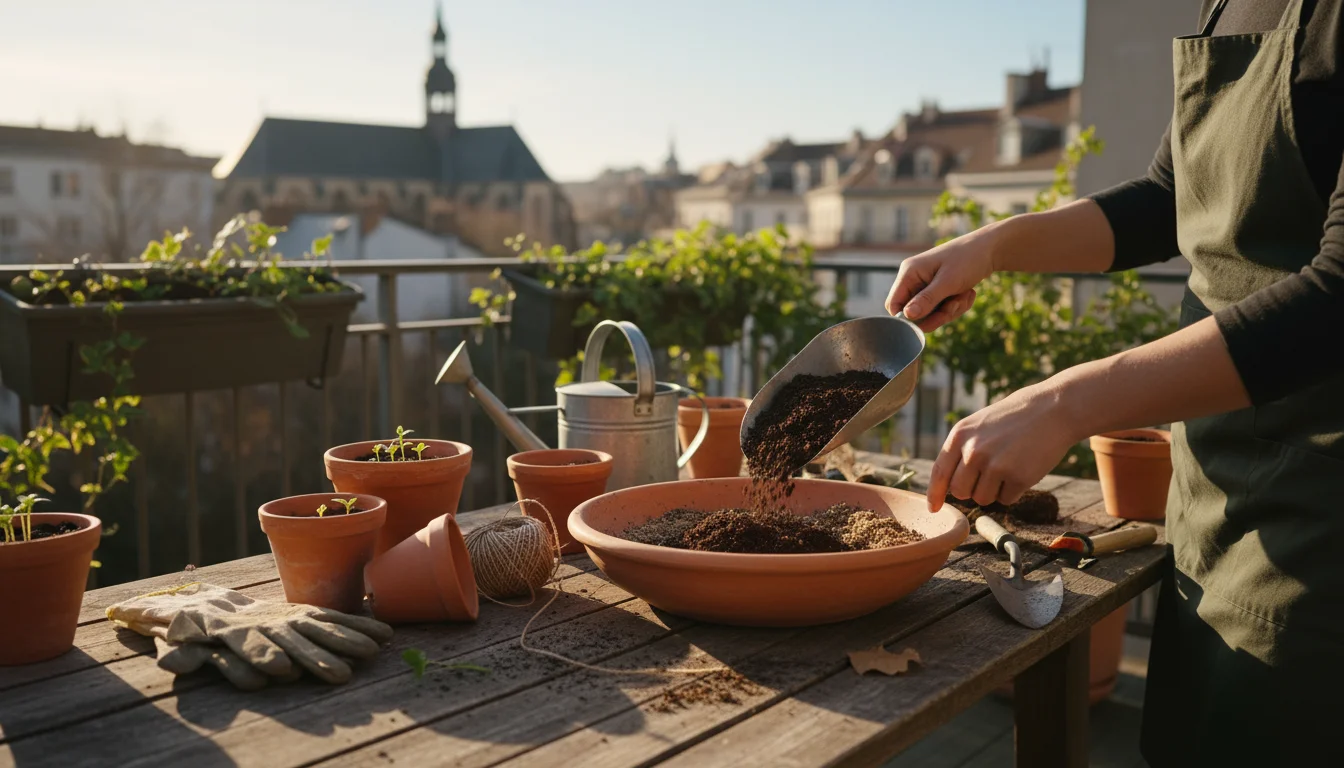
Refreshing and Reusing Potting Mix
Do not discard old potting mix. You can refresh and reuse it.
- Remove old plant roots and debris.
- Mix in fresh compost (about one-third of the total volume).
- Add a slow-release organic fertilizer to replenish nutrients.
- If the mix feels compacted, incorporate more perlite or coir.
This practice reduces waste and saves money on new potting soil. You contribute to a circular economy in your garden.
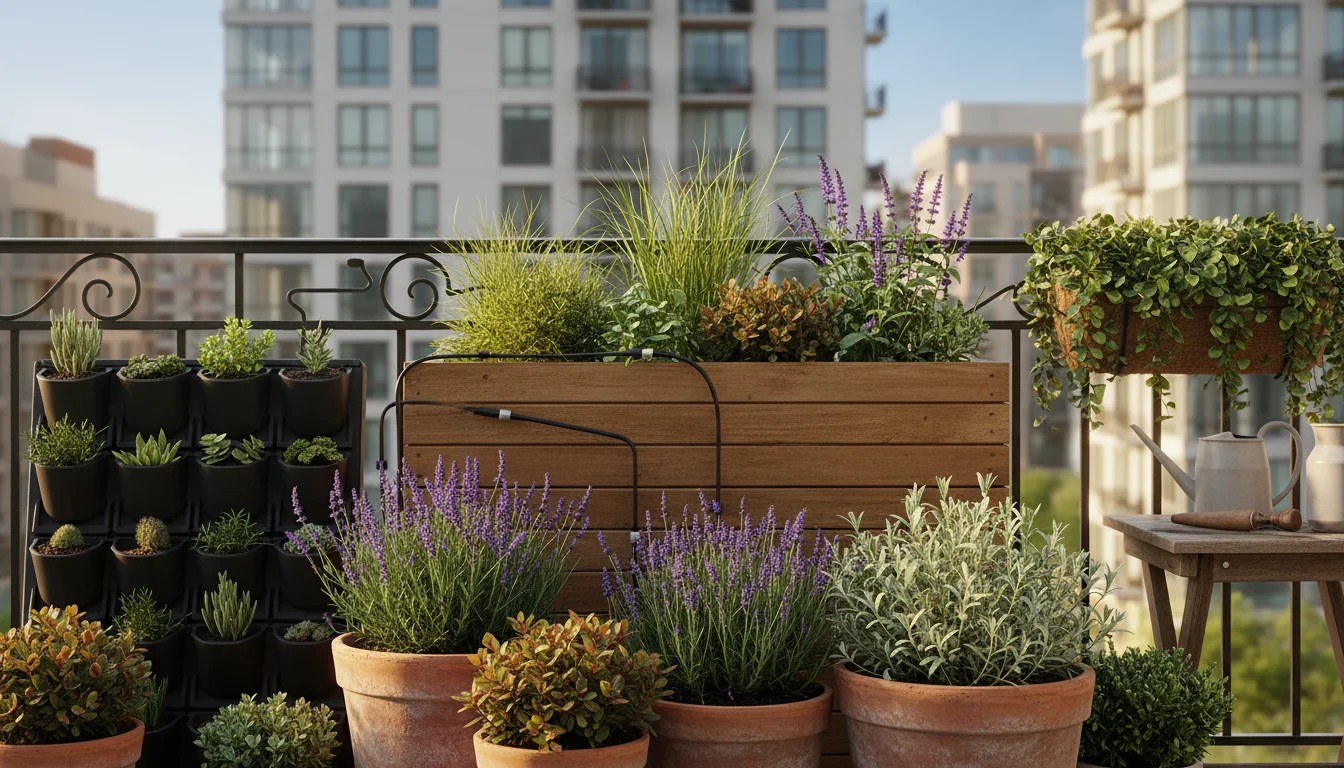
Smart Watering Strategies for Drought Tolerance
Even `drought tolerant plants` need water, especially when establishing or during extreme heat. The key is to water smartly, not frequently. Efficient irrigation is a cornerstone of any `water wise garden`. You can drastically reduce water waste by adopting targeted techniques.
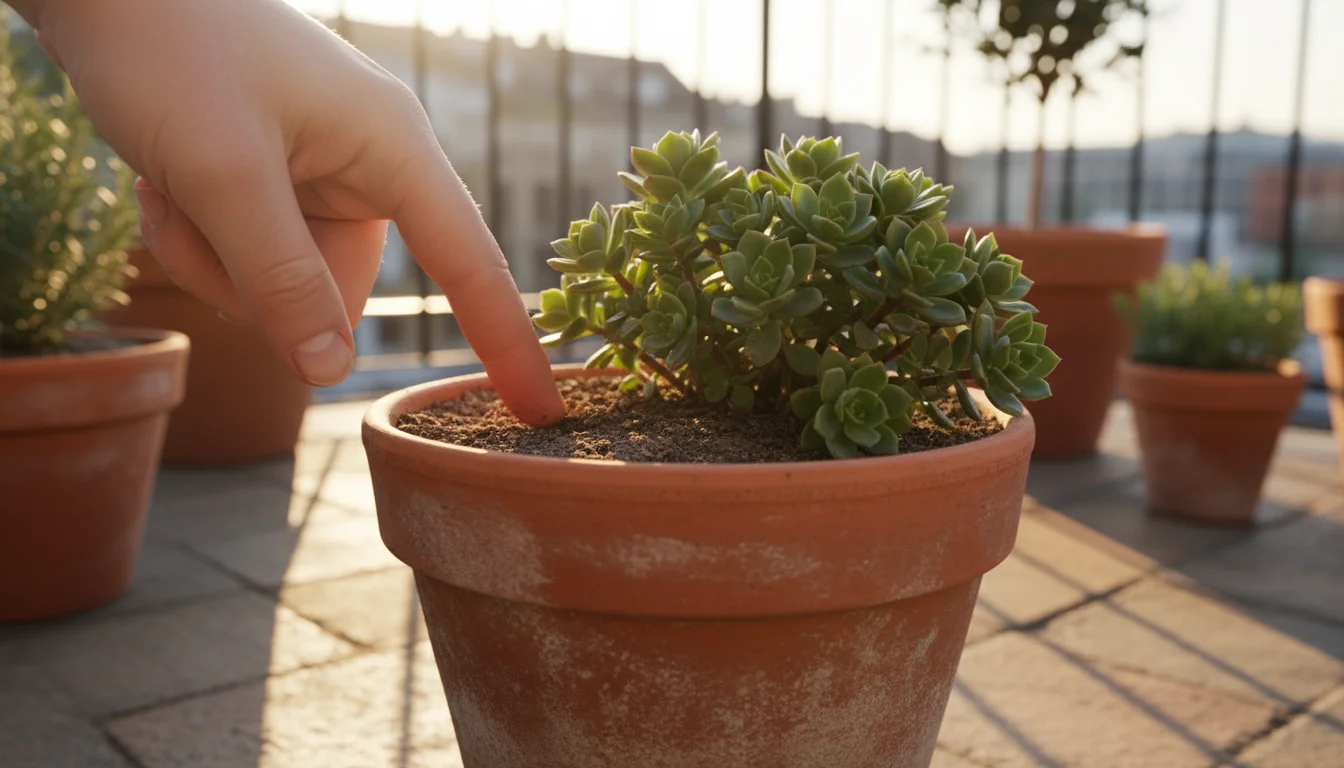
Deep and Infrequent Watering
This is the golden rule for xeriscaping. Instead of light, frequent sprinkles, water deeply and thoroughly.
- Encourage Deep Roots: Deep watering encourages plant roots to grow deeper into the soil, where moisture is more consistent. Shallow watering keeps roots near the surface, making plants more vulnerable to drought.
- Check Soil Moisture: Before watering, stick your finger about 2-3 inches into the soil. If it feels dry, it is time to water. If it is still moist, wait. Your plants tell you when they need water, not the calendar.
- Water Slowly: Apply water slowly to allow it to penetrate the soil without runoff. This is especially important in containers where water can quickly escape through drainage holes if applied too fast.
- Best Time to Water: Water in the early morning. This minimizes evaporation from the sun and heat, allowing water to reach the roots efficiently. Watering in the evening can lead to fungal issues in some plants due to prolonged leaf wetness.
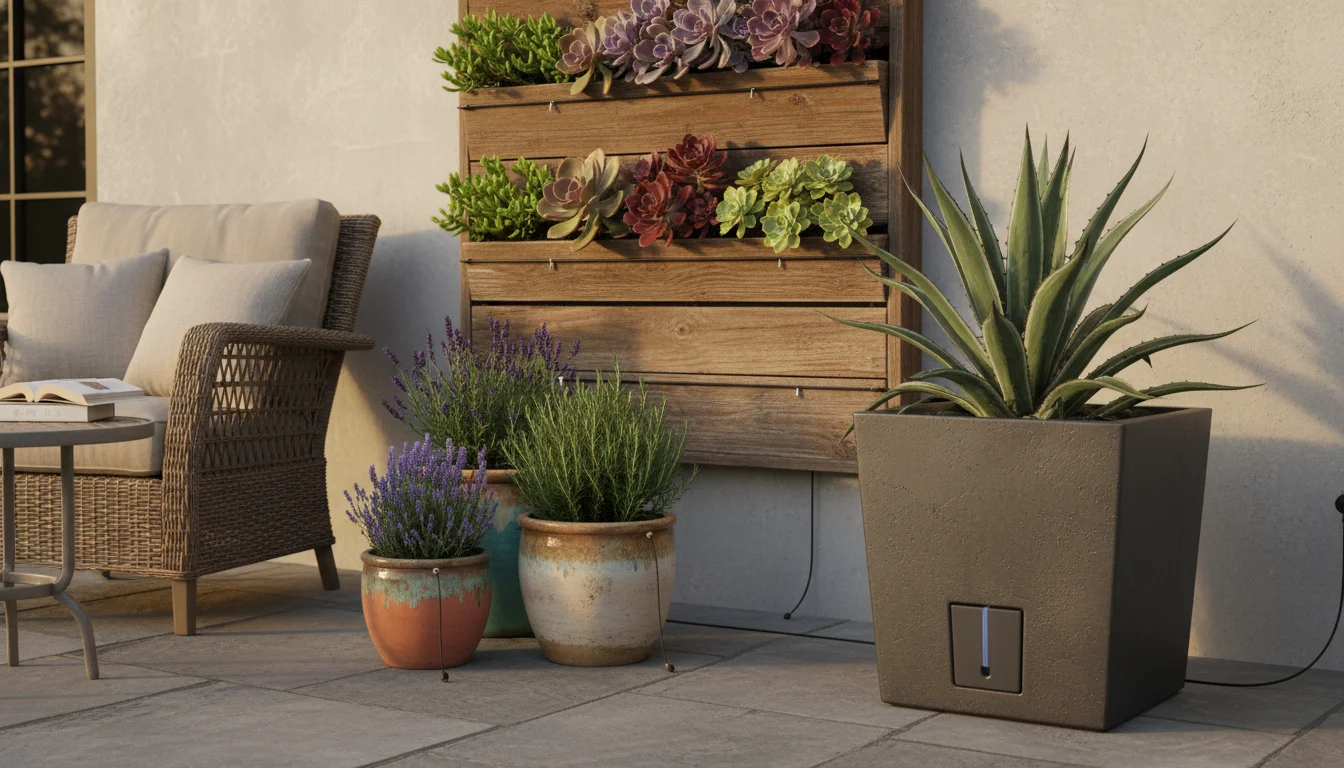
Efficient Irrigation Systems for Small Spaces
Manual watering can be precise, but automated systems offer convenience and often greater efficiency.
- Drip Irrigation: A drip system delivers water directly to the plant’s root zone, minimizing evaporation and runoff. You can install simple drip lines in containers or small beds. Kits are available for DIY installation, making it an accessible option for small spaces. This system ensures every drop counts.
- Self-Watering Containers: These containers feature a water reservoir at the bottom and a wicking system that draws water up to the roots as needed. They are excellent for maintaining consistent moisture without constant vigilance, and some are specifically designed as a `xeriscape container` option. You fill the reservoir less frequently, saving time and water.
- Watering Globes/Spikes: While less efficient than drip systems, these can provide a slow, steady release of water for individual plants. They are helpful for vacation watering or specific plants with higher needs.
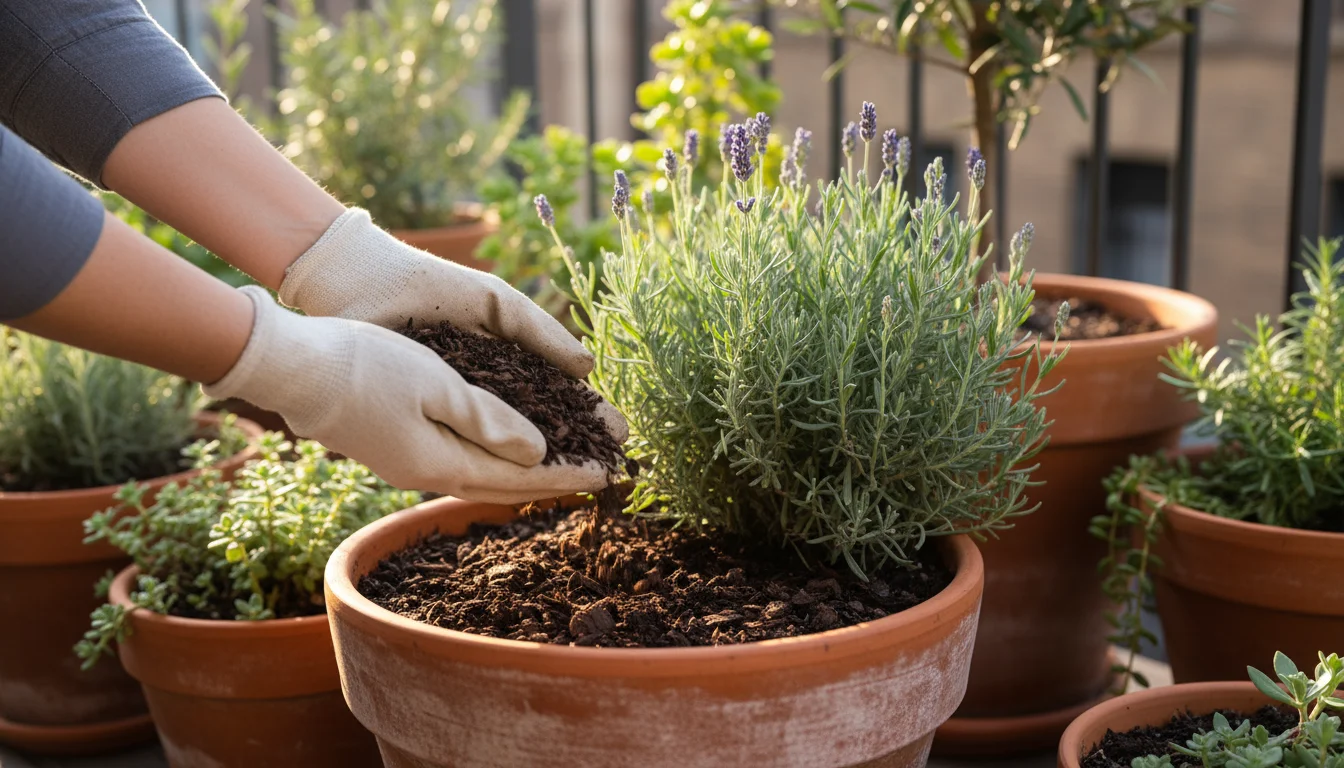
The Power of Mulch
Mulching is a simple yet incredibly effective water-saving strategy for any `water wise garden`, especially in containers.
- Retain Moisture: A 2-3 inch layer of organic mulch (e.g., wood chips, shredded bark, straw, compost) on top of your soil significantly reduces water evaporation. Mulch acts as a barrier, keeping the soil cooler and moister.
- Suppress Weeds: Mulch smothers weeds, which compete with your plants for water and nutrients. You eliminate the need for herbicides and reduce labor.
- Regulate Soil Temperature: Mulch insulates the soil, protecting roots from extreme heat in summer and cold in winter.
- Add Nutrients: Organic mulches decompose over time, enriching your soil with beneficial organic matter.
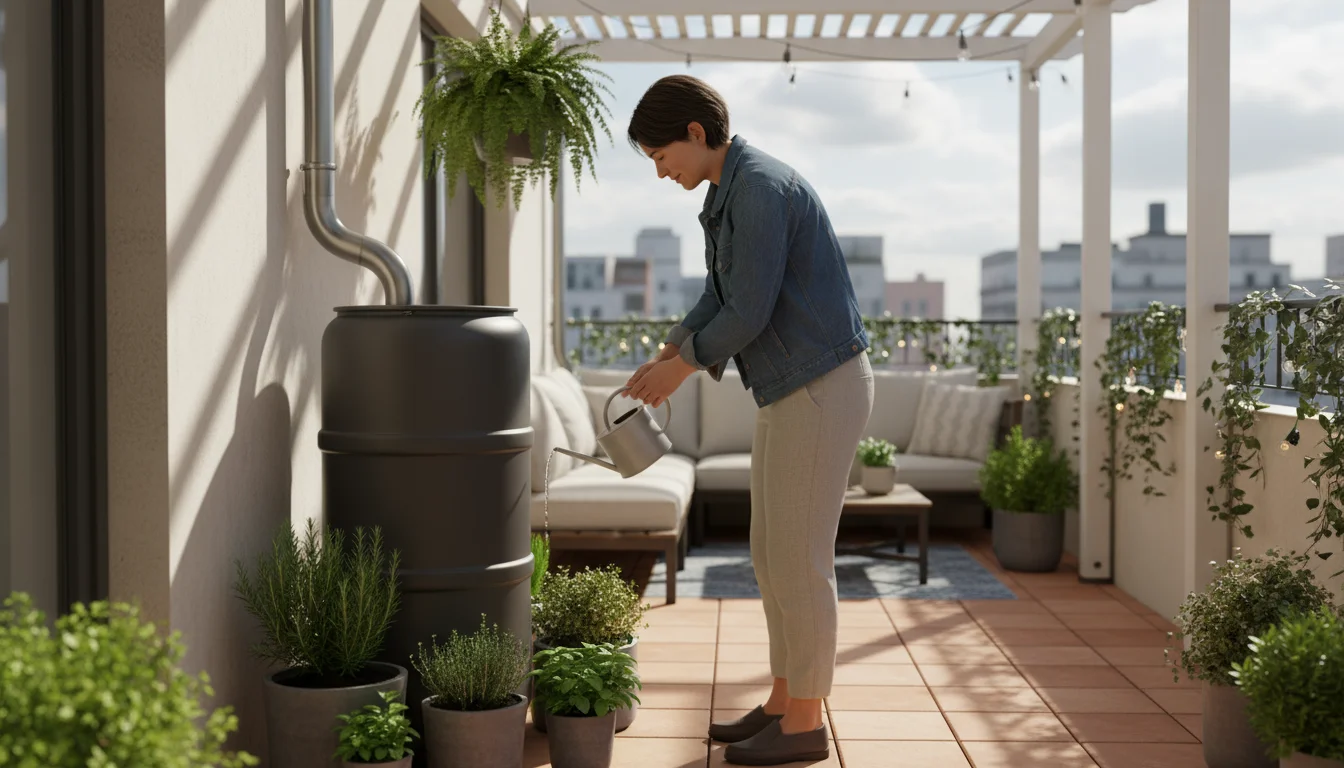
Rain Capture Basics
Harnessing rainwater is perhaps the ultimate water-wise practice.
- Rain Barrels: Install a rain barrel connected to a downspout from a roof or awning. This captures free, chlorine-free water for your plants. A single rain event can fill a standard barrel, providing many gallons of irrigation. You use a renewable resource directly.
- DIY Catchments: For balconies, you can place buckets or larger containers strategically to collect rainwater directly. Even small amounts accumulate quickly. Ensure these do not overflow or create hazards.
- Greywater (Use with Caution): Greywater refers to lightly used water from sinks, showers, or washing machines, excluding toilet water. With proper filtration and local regulation checks, you can divert greywater to irrigate non-edible plants. Always check local guidelines and use biodegradable soaps. You reuse water effectively, but safety is paramount.
Capturing and using rainwater reduces your reliance on municipal water and lessens stormwater runoff, which often carries pollutants into waterways. You create a more self-sufficient watering system.
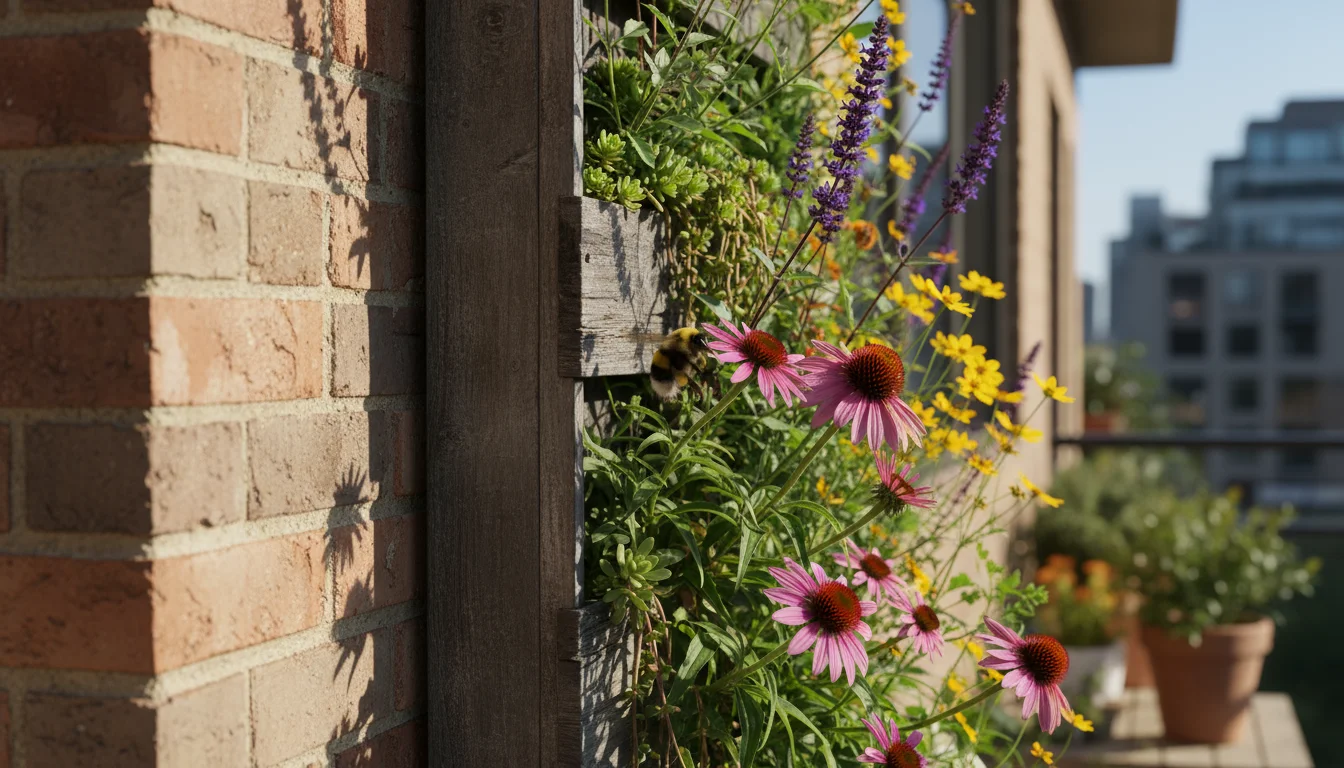
Native and Pollinator-Friendly Xeriscaping
When you choose native `drought tolerant plants`, you are not only saving water but also supporting local ecosystems. Native plants are inherently adapted to your region’s climate, soil, and rainfall patterns, making them incredibly resilient and low-maintenance. They also provide vital resources for native pollinators, birds, and other wildlife. You foster biodiversity and create a vibrant, living garden.
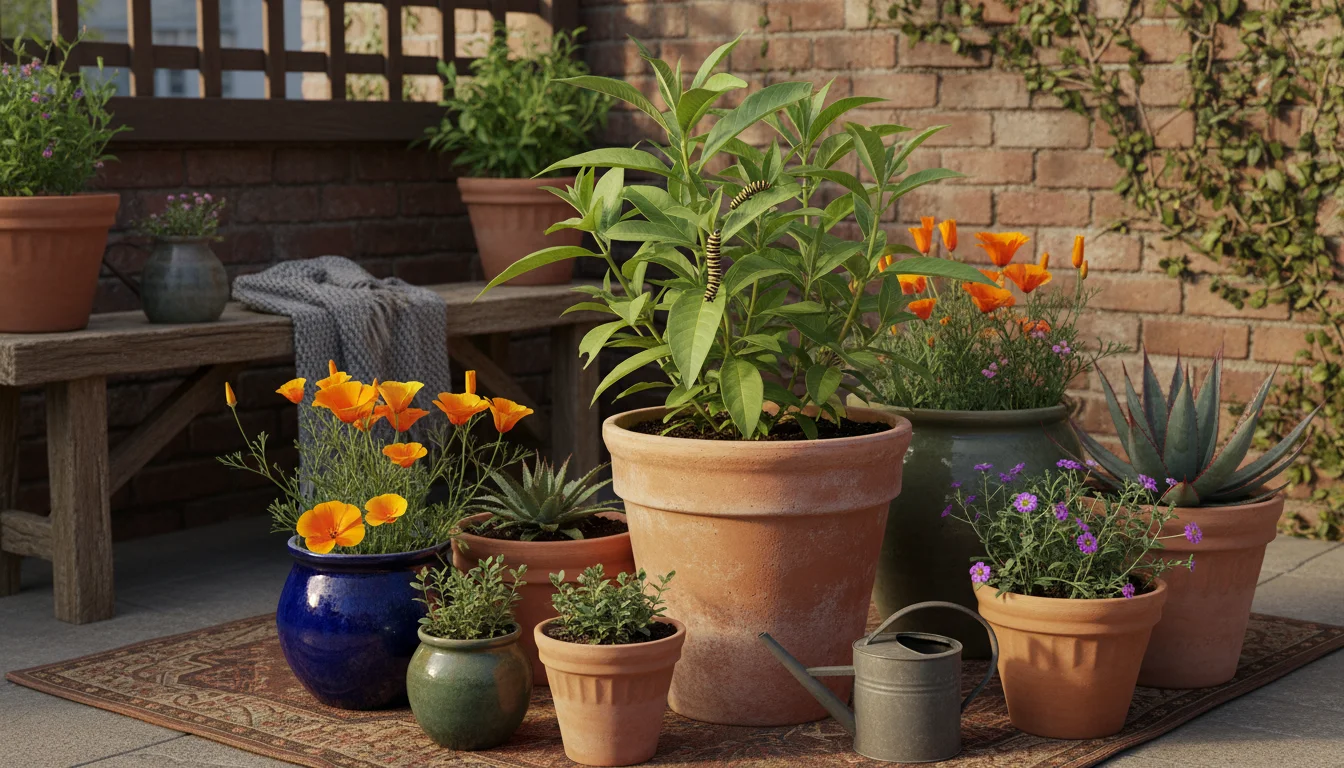
The Benefits of Native Plants
- Water Efficiency: Native plants thrive on local rainfall once established, significantly reducing your need for supplemental irrigation. They are naturally water-wise garden selections.
- Ecosystem Support: Native plants have co-evolved with local wildlife. They offer the specific nectar, pollen, and host plant leaves that native insects, including bees and butterflies, require for survival. Non-native plants often lack these crucial connections. For instance, monarch butterflies rely exclusively on milkweed (Asclepias spp.) as a host plant for their larvae.
- Pest Resistance: Being adapted to local conditions, native plants often exhibit greater natural resistance to regional pests and diseases, minimizing the need for interventions.
- Low Maintenance: Once established, native plants typically require less fertilizer, pesticides, and pruning. They are designed to thrive in your local environment without constant fuss.
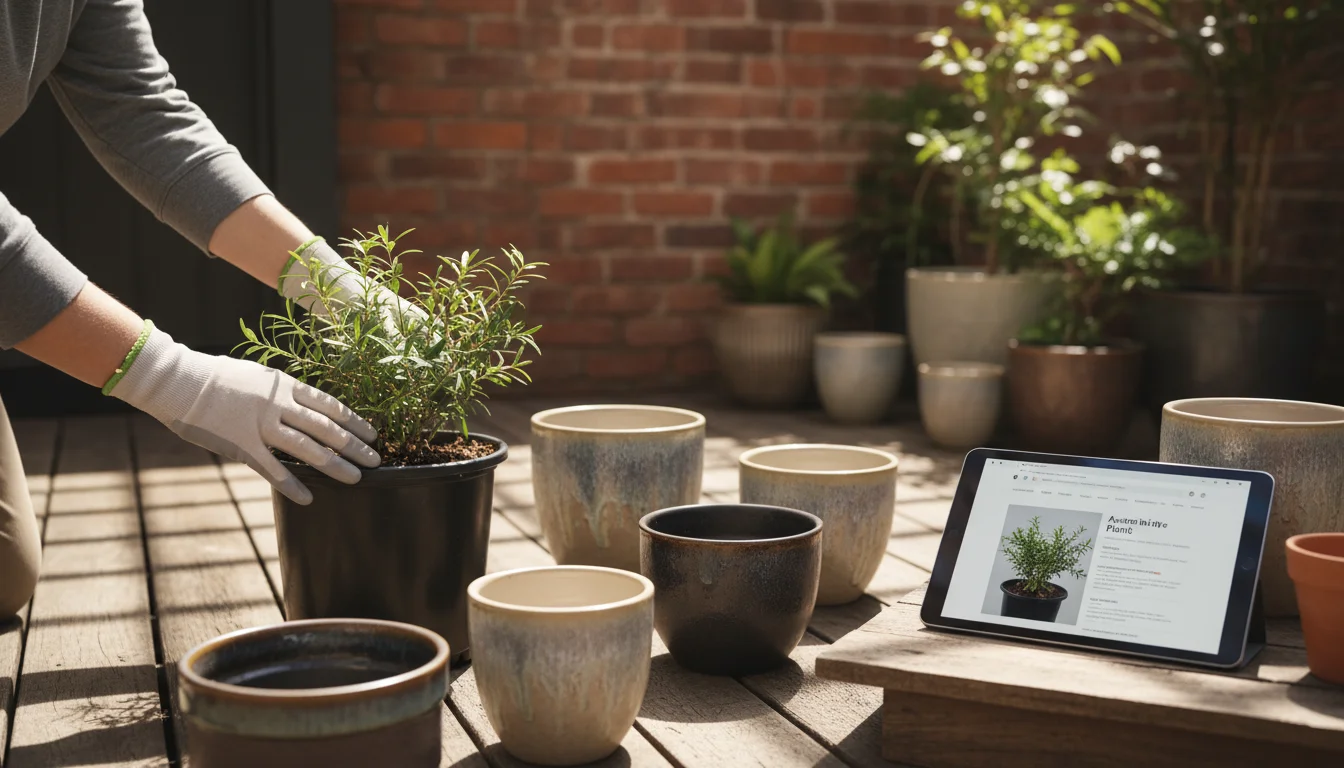
Selecting Native Plants for Your Area
Researching plants native to your specific ecoregion is crucial. Resources like the Xerces Society, Pollinator Partnership, and local university extension offices provide excellent guidance. Look for local nurseries that specialize in native plants.
Consider these factors:
- Sunlight and Soil: Match plants to your specific microclimates.
- Mature Size: Choose plants that fit your small space without overgrowing it. Look for compact varieties of native shrubs or perennials.
- Bloom Sequence: Select plants that provide continuous blooms from spring through fall. This ensures a steady food source for pollinators throughout the growing season.
- Host Plants: Include plants that serve as food for the larval stage of specific butterflies and moths.
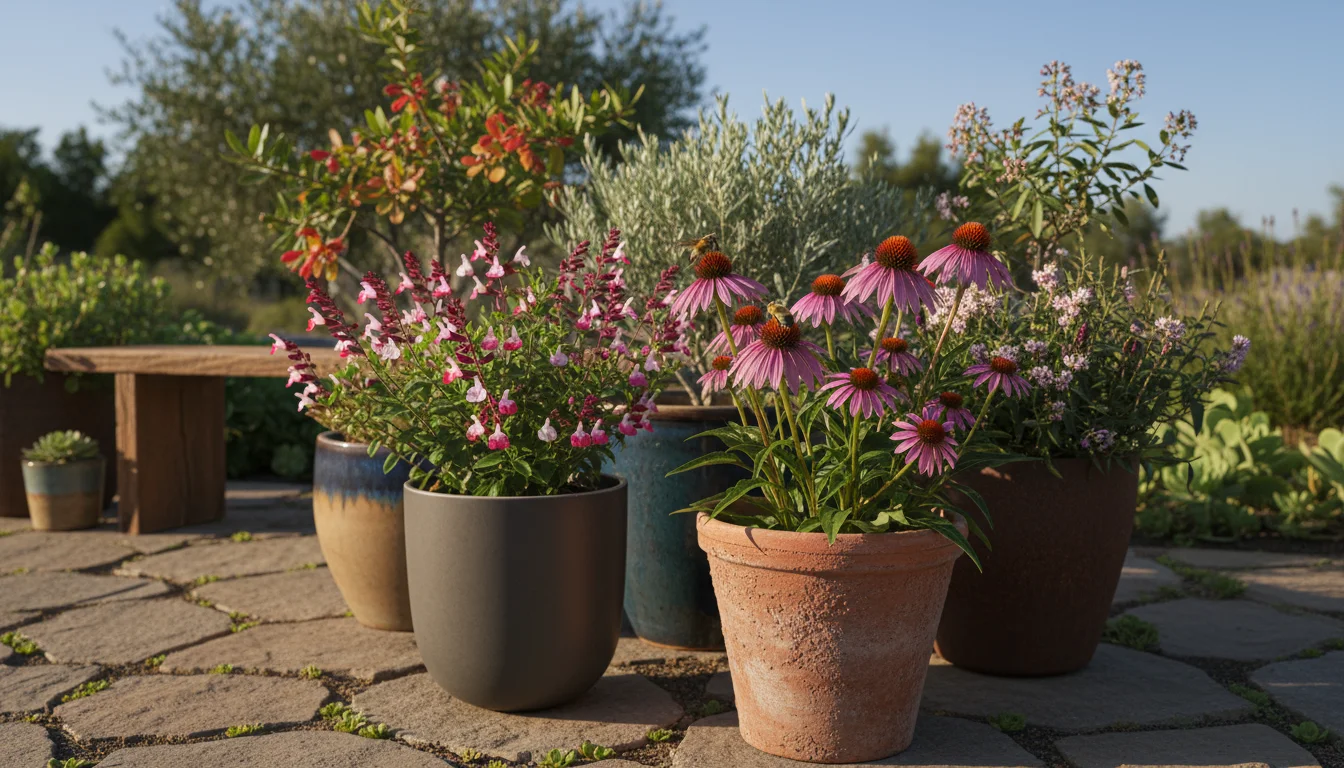
Example Drought-Tolerant Native Plants (General Examples, always check local suitability):
This table provides examples; remember to consult local resources for species specific to your exact area.
| Plant Type | Example Native Plants | Pollinator Benefit | Water Needs (Established) |
|---|---|---|---|
| Perennials | Coneflower (Echinacea spp.) | Bees, butterflies | Low to Moderate |
| Perennials | Salvia (e.g., Salvia greggii) | Hummingbirds, bees | Low |
| Perennials | Yarrow (Achillea millefolium) | Bees, beneficial insects | Low |
| Grasses | Little Bluestem (Schizachyrium scoparium) | Host plant for Skipper butterflies | Low |
| Shrubs (Compact) | Dwarf Bush Honeysuckle (Diervilla lonicera) | Bees, butterflies | Low to Moderate |
| Host Plant | Milkweed (Asclepias tuberosa) | Monarch butterflies (larvae and adults) | Low |
| Succulents/Cacti | Prickly Pear (Opuntia spp.) | Bees, fruit for wildlife | Very Low |
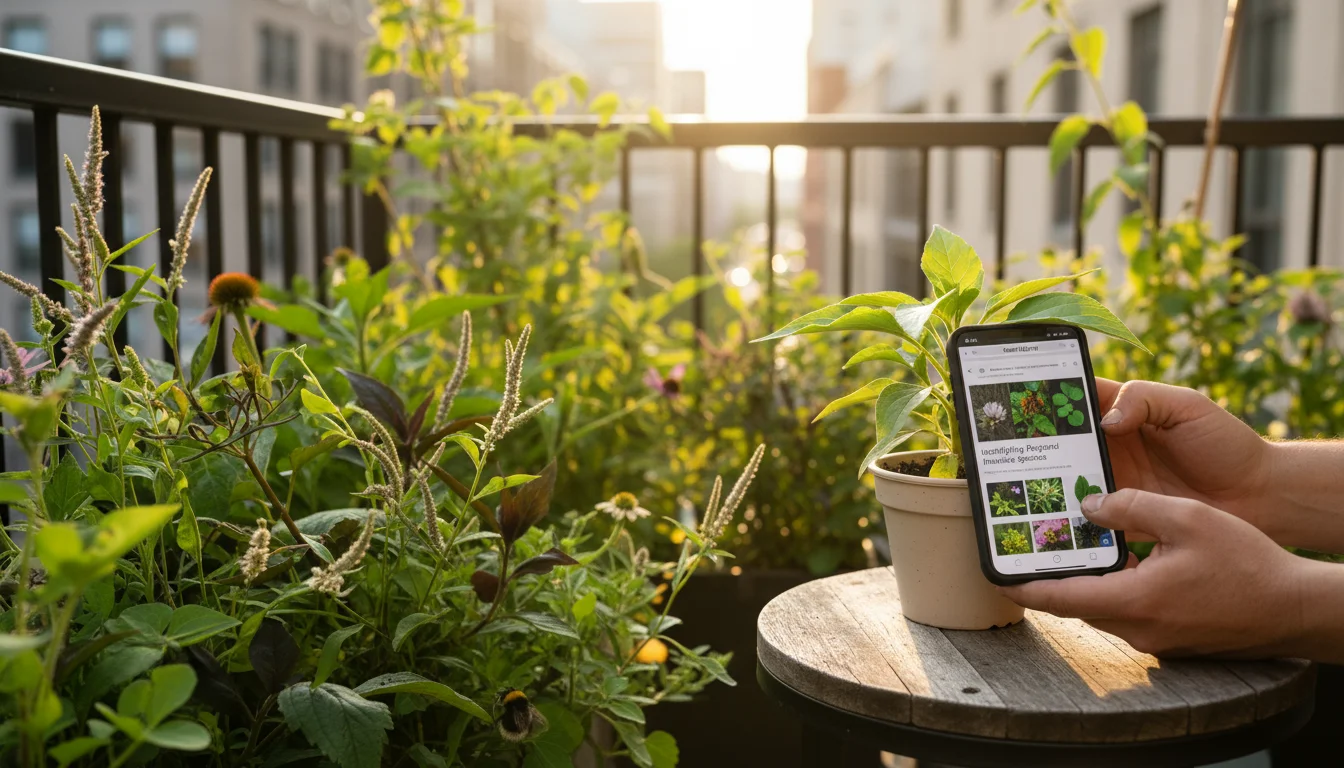
Avoiding Invasive Species
Always avoid plants listed as invasive in your region, even if they appear drought tolerant or attractive. Invasive species outcompete native plants, disrupt ecosystems, and reduce biodiversity. Your choice of a `water wise garden` should always support local ecological health, not undermine it.
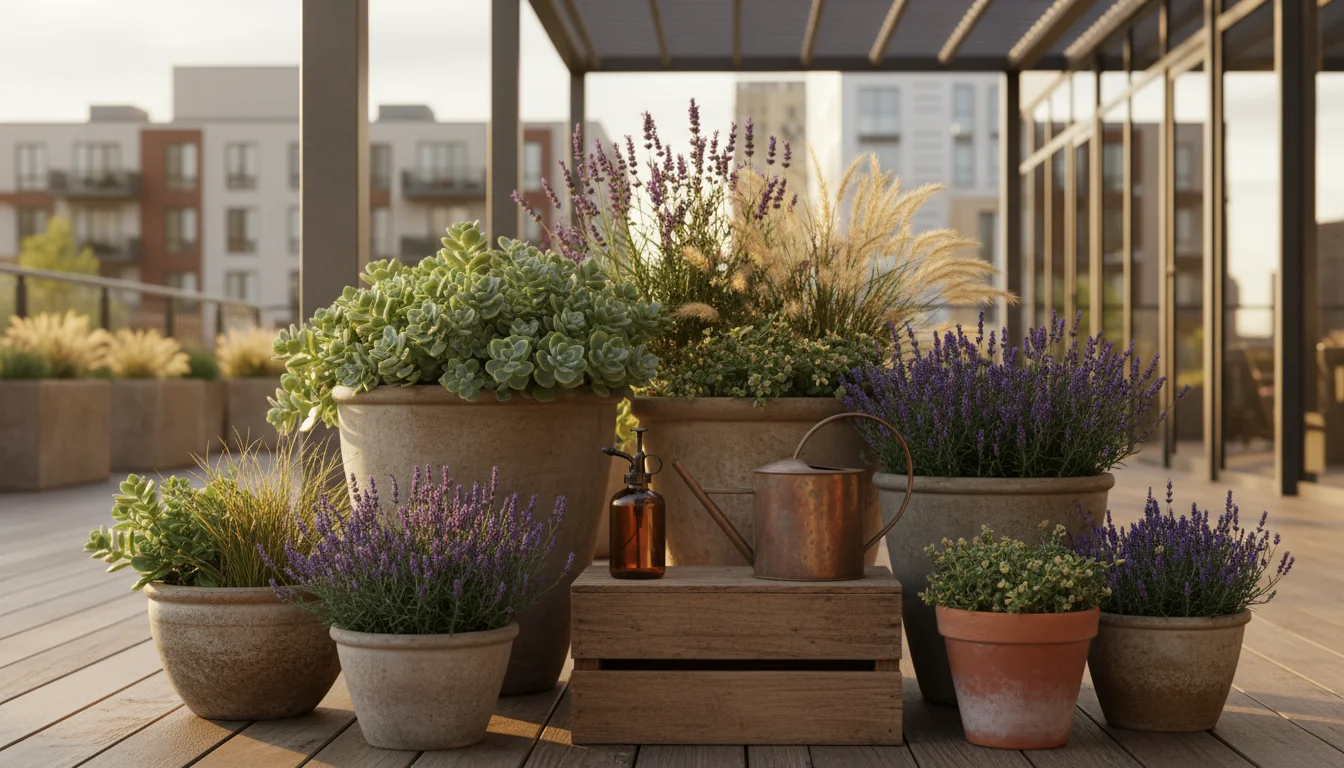
Low-Maintenance Practices and Safe Pest Management
A xeriscaped garden naturally lends itself to low maintenance. By selecting the right plants and establishing a healthy growing environment, you minimize common gardening challenges. When pests do appear, employing safe, sustainable strategies protects your plants without harming beneficial insects or the environment. You adopt a proactive approach to plant health.
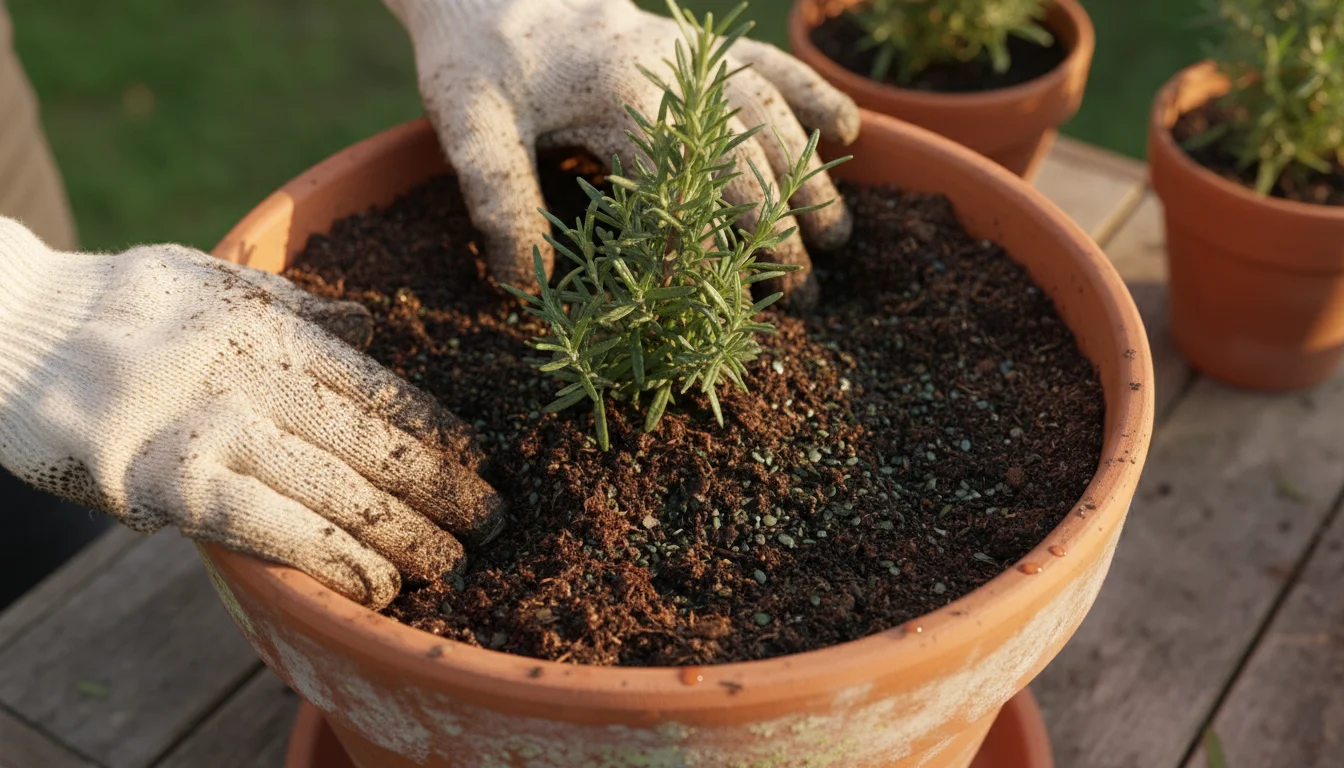
Soil Health in Containers
Healthy soil forms the basis of resilient plants. In containers, soil needs your constant attention.
- Beneficial Microbes: Encourage a thriving soil food web. Compost tea, worm castings, and organic fertilizers introduce beneficial bacteria and fungi that break down nutrients and improve plant vigor. Healthy soil microbes help plants absorb water and nutrients more efficiently, making them more resilient to stress.
- Slow-Release Organic Feeds: Instead of synthetic, fast-acting fertilizers, use slow-release organic options like compost, kelp meal, or alfalfa meal. These release nutrients gradually, feeding the soil and plants over time, and reducing the risk of nutrient runoff. You avoid over-fertilizing and support long-term soil health.
- Avoiding Salt Buildup: Container plants are susceptible to salt buildup from tap water and fertilizers. Periodically flush your containers by watering until a significant amount of water drains out the bottom. This leaches excess salts away, preventing root damage. You ensure a healthier root environment.
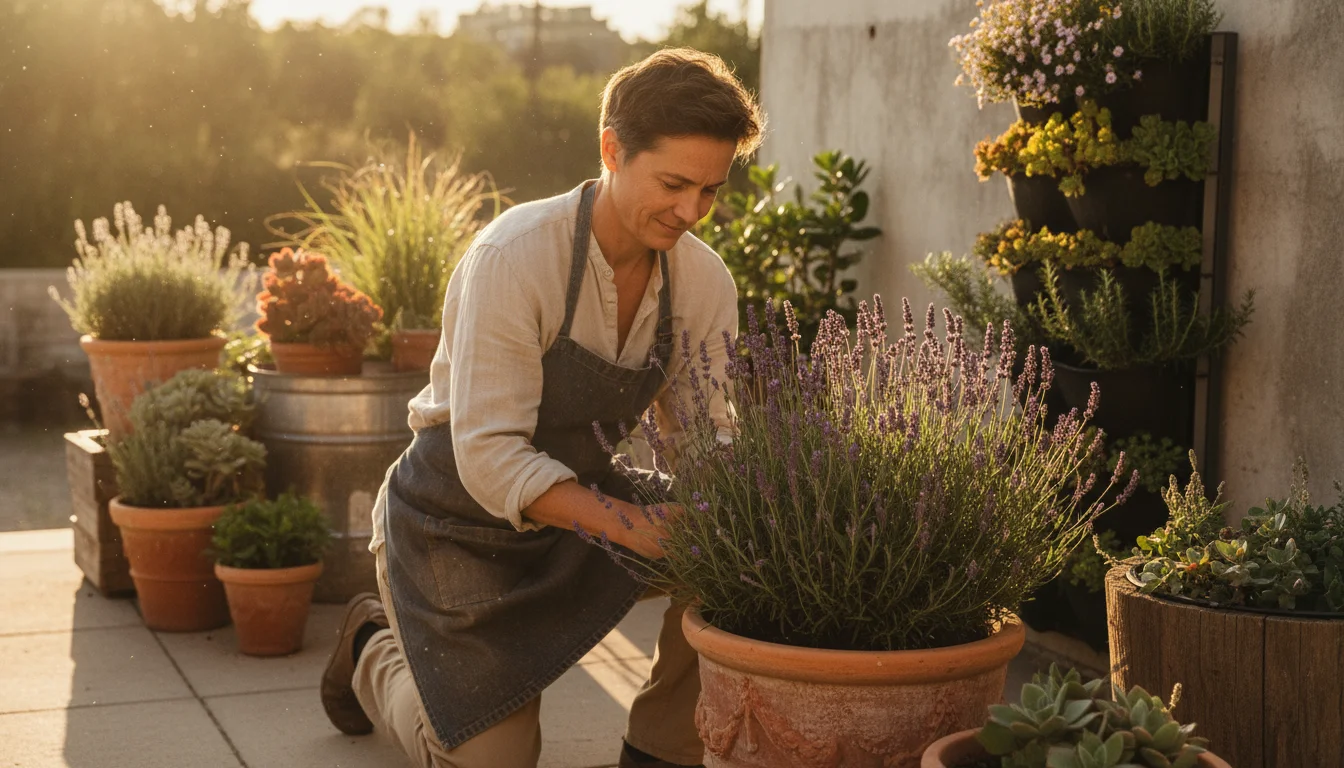
Integrated Pest Management (IPM) for a Sustainable Xeriscape
IPM is a comprehensive approach to pest control that minimizes environmental impact. It focuses on prevention and uses chemical controls only as a last resort. You maintain a balanced ecosystem in your garden.
1. Prevention
- Right Plant, Right Place: Healthy plants are less susceptible to pests. Choosing `drought tolerant plants` adapted to your specific site conditions is your first line of defense.
- Garden Hygiene: Remove dead leaves and spent flowers. Pests often hide in plant debris. Clean tools prevent the spread of diseases.
- Good Air Circulation: Space plants appropriately to ensure good airflow, which helps prevent fungal diseases.
- Companion Planting: Some plants naturally deter pests or attract beneficial insects. For example, marigolds can repel nematodes, while dill and fennel attract predatory wasps and ladybugs.
2. Monitoring
- Regular Inspections: Inspect your plants frequently for early signs of pests or disease. Check both the top and underside of leaves. Early detection allows for easier, less invasive intervention.
- Identify Pests: Know your enemy. Correctly identifying the pest helps you choose the most effective and targeted control method.
3. Mechanical and Cultural Controls
- Hand Picking: For larger pests like slugs or caterpillars, simply pick them off and remove them.
- Water Spray: A strong spray of water dislodges aphids, spider mites, and whiteflies.
- Pruning: Remove heavily infested plant parts to prevent spread.
- Physical Barriers: Use row covers for vegetables or sticky traps for flying insects.
4. Least-Toxic Options (When Necessary)
If prevention and mechanical controls are insufficient, consider these options:
- Insecticidal Soaps: Effective against soft-bodied insects like aphids, mites, and mealybugs. They work by smothering pests.
- Neem Oil: A botanical insecticide that acts as a repellent, antifeedant, and growth regulator. It is effective against a wide range of pests.
- Horticultural Oils: Similar to insecticidal soaps, they smother pests.
Always apply these products according to label directions, and avoid spraying during peak pollinator activity (e.g., mid-day) to protect beneficial insects. You use targeted solutions with minimal broader impact.
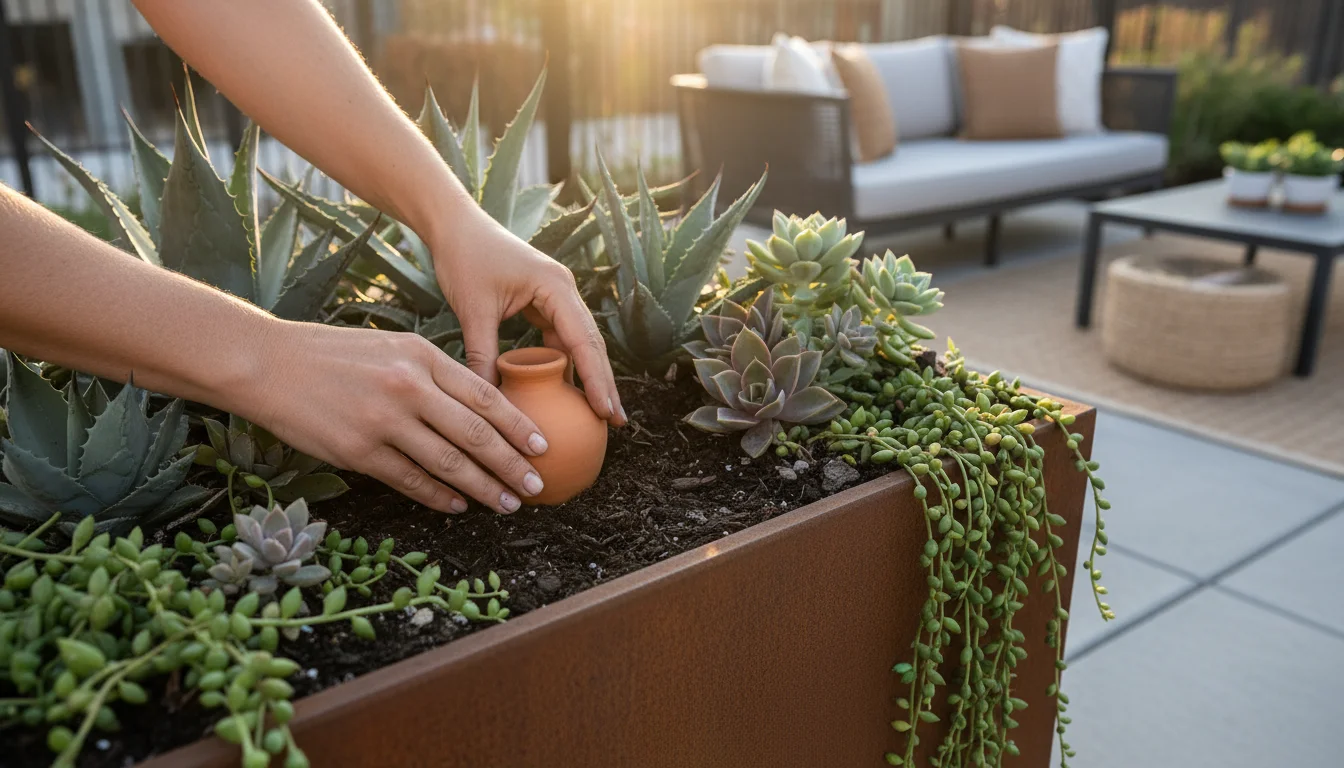
Resourceful Habits for a Sustainable Xeriscape
Embracing resourceful habits extends the principles of xeriscaping beyond just water saving. It involves minimizing waste, maximizing resources, and creating a more self-sufficient garden. You transform your garden into a model of sustainability and ingenuity.
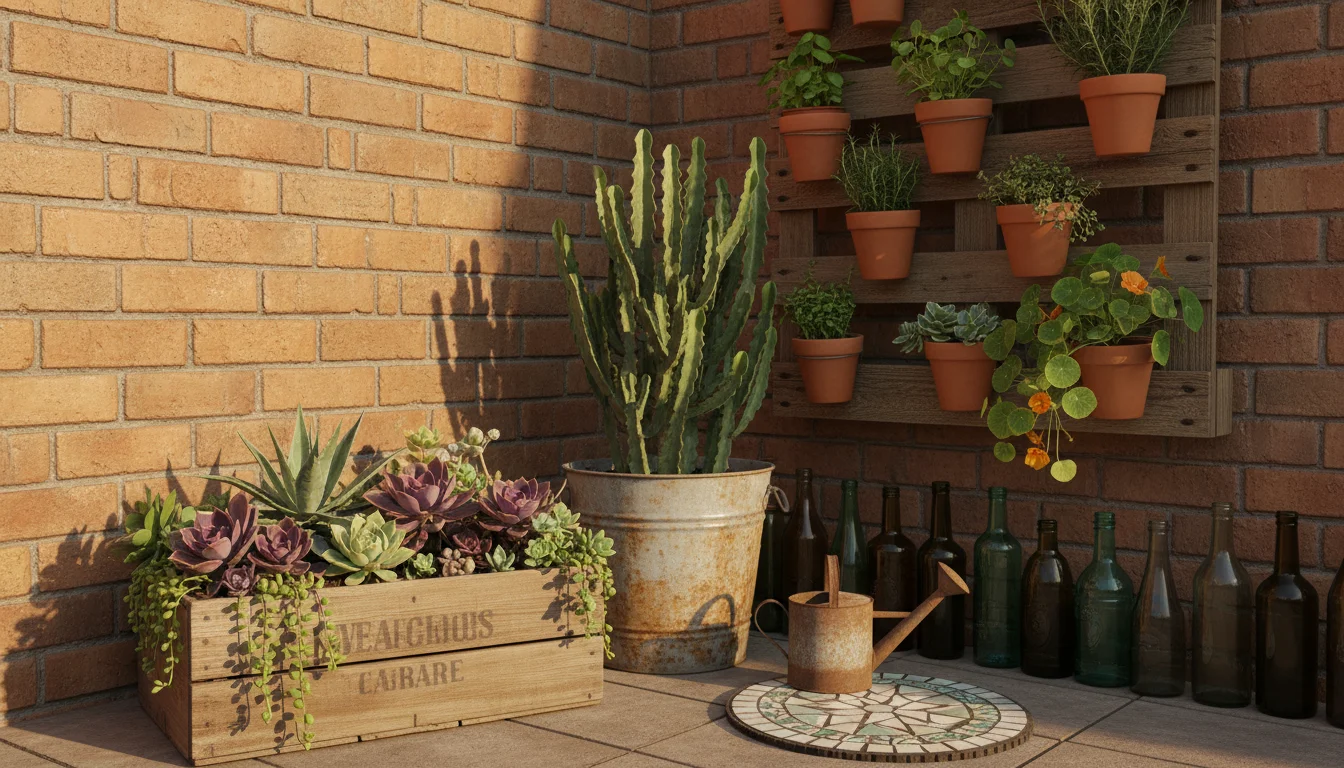
Upcycling and Reuse
- Containers: Repurpose household items into attractive planters. Old tires (check for leaching concerns), broken ceramic tiles to create mosaics, sturdy buckets, tin cans, or wooden crates can all become homes for your `drought tolerant plants`. Ensure adequate drainage holes. You give new life to discarded items.
- Vertical Gardening: Use pallets, old shelving units, or hanging shoe organizers to create vertical gardens. This maximizes space for more plants while keeping them off the ground and potentially reducing water loss to evaporation. You make the most of limited footprints.
- Rainwater Catchment: Beyond rain barrels, improvise smaller systems. Use strategically placed buckets or repurposed food-grade barrels to collect roof runoff or even water from your patio umbrella. You gather free water effortlessly.
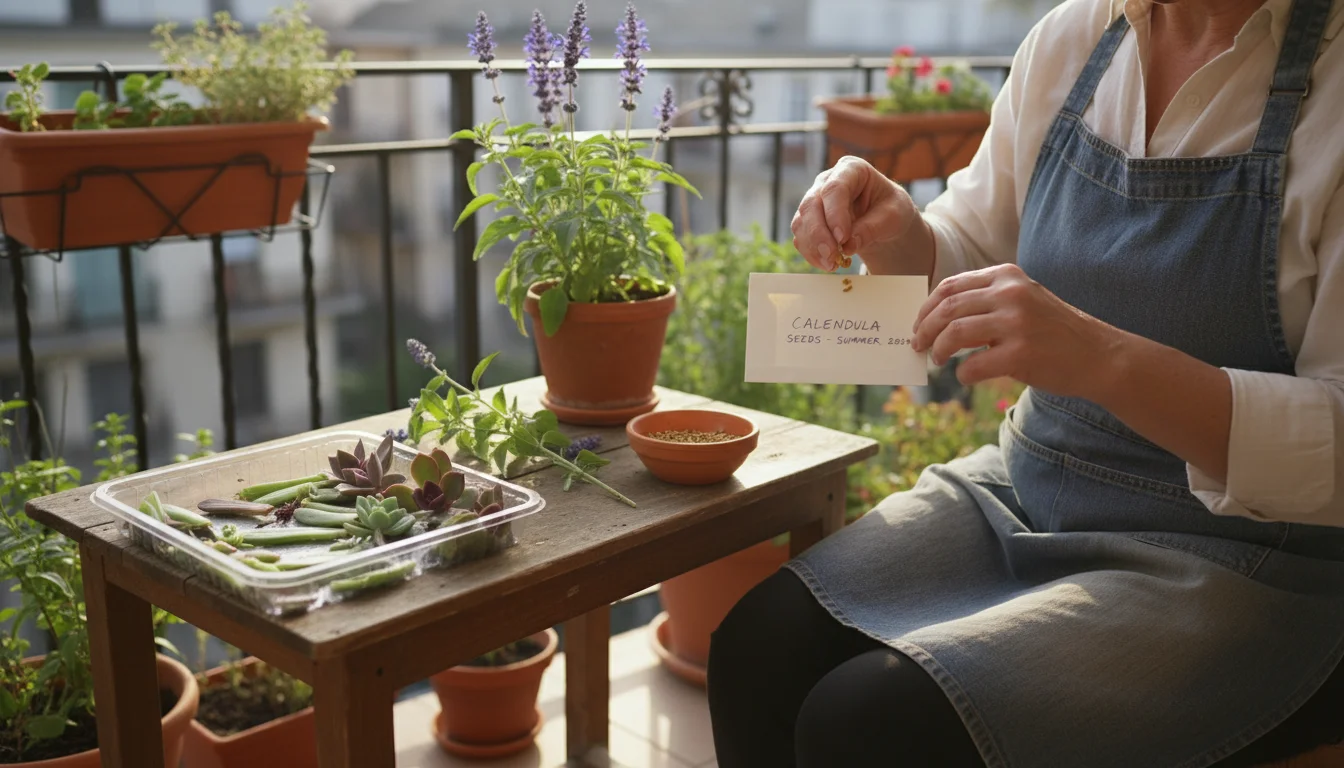
Seed Saving and Cuttings
- Seed Saving: If you grow open-pollinated (non-hybrid) varieties, save seeds from your healthiest plants. This reduces your reliance on purchasing new seeds each year and helps you adapt plants specifically to your garden’s microclimate over generations. You preserve genetic diversity and save money.
- Cuttings: Many `drought tolerant plants` propagate easily from cuttings. Take cuttings from mature plants to start new ones. This is especially effective for succulents, salvias, and many herbs. You expand your plant collection for free.

Sharing and Networking
- Plant Swaps: Connect with other local gardeners. Trade excess seeds, cuttings, or divisions of plants. This is a fantastic way to acquire new varieties and reduce waste. You build community and diversify your garden.
- Compost Sharing: If you produce more compost than you need or have limited space for a full compost bin, find a community garden or neighbor who can use it. Conversely, if you need more, you might find a local source. You participate in a local circular economy.
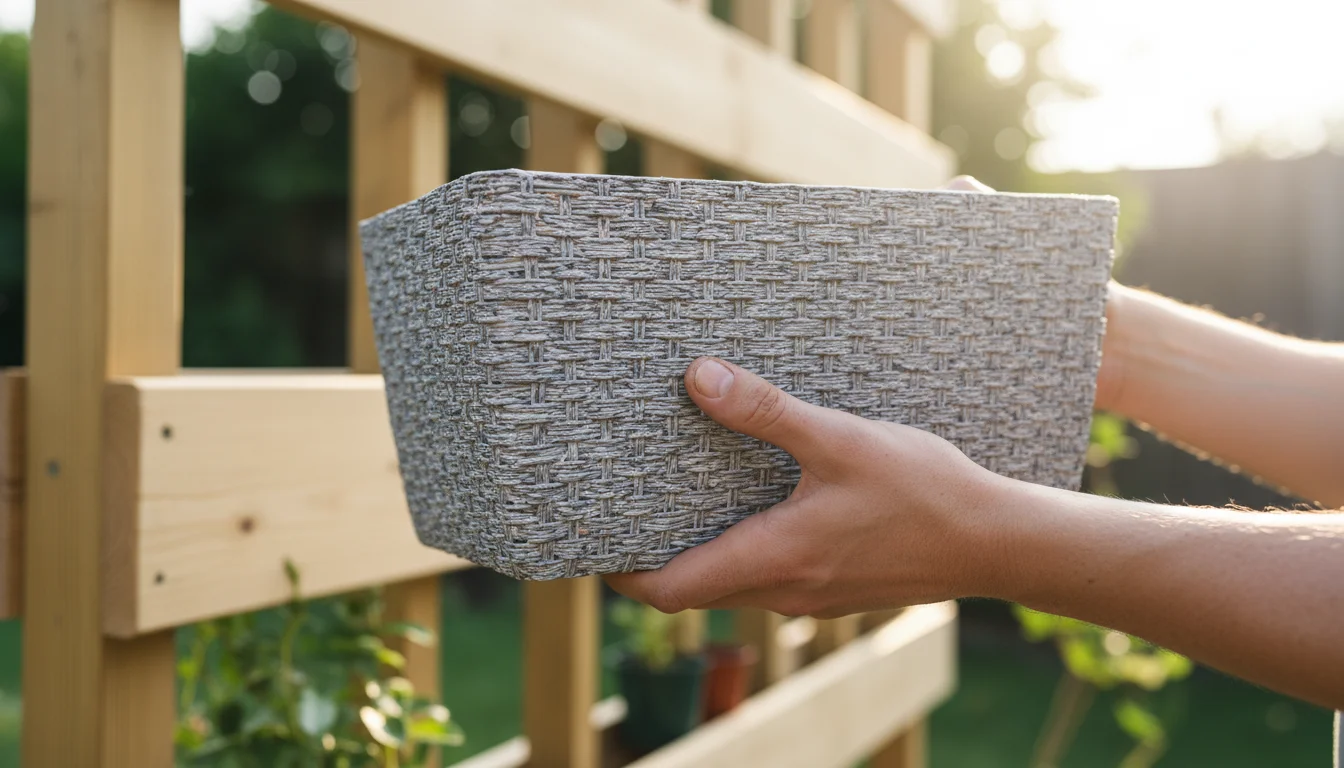
Material Choices
- FSC-Certified Wood: If building raised beds, trellises, or other garden structures, opt for FSC (Forest Stewardship Council) certified wood. This ensures the wood comes from sustainably managed forests. You support responsible forestry.
- Recycled Plastic: Choose planters and garden tools made from recycled plastics. This diverts waste from landfills and reduces the demand for new plastic production. You close the loop on plastic use.
- Non-Toxic Finishes: If painting or sealing wood, use low-VOC (volatile organic compound) or natural finishes. This protects your health and the environment. You avoid harmful chemicals in your garden space.
These habits weave sustainability into the very fabric of your gardening routine, demonstrating that a small space can have a big positive impact.
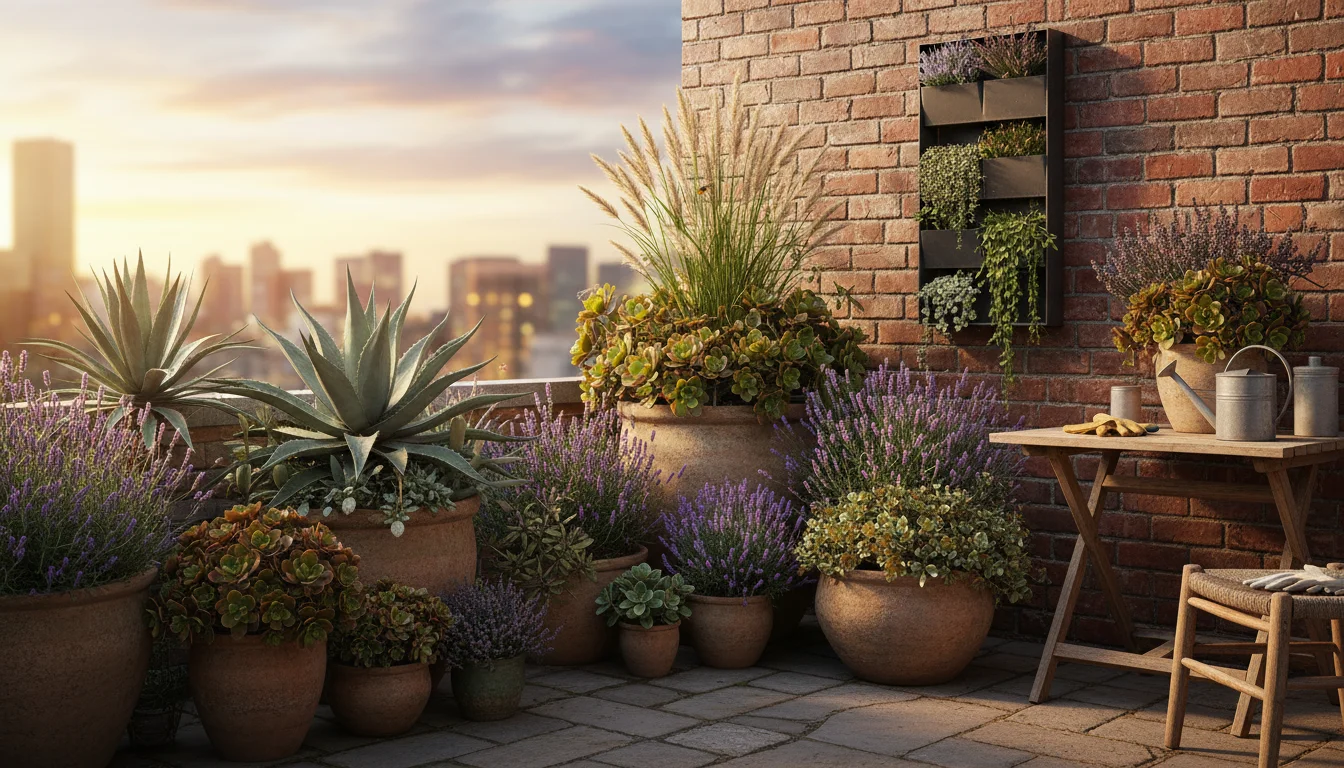
Xeriscaping for Climate Resilience
Climate change brings more extreme weather events, including prolonged heatwaves, intense winds, unexpected frosts, and even wildfire smoke. Your `water wise garden` can be designed to withstand these challenges. By incorporating specific resilience strategies, you protect your plants and ensure your garden remains a source of joy, even in adverse conditions. You empower your plants to cope with a changing environment.
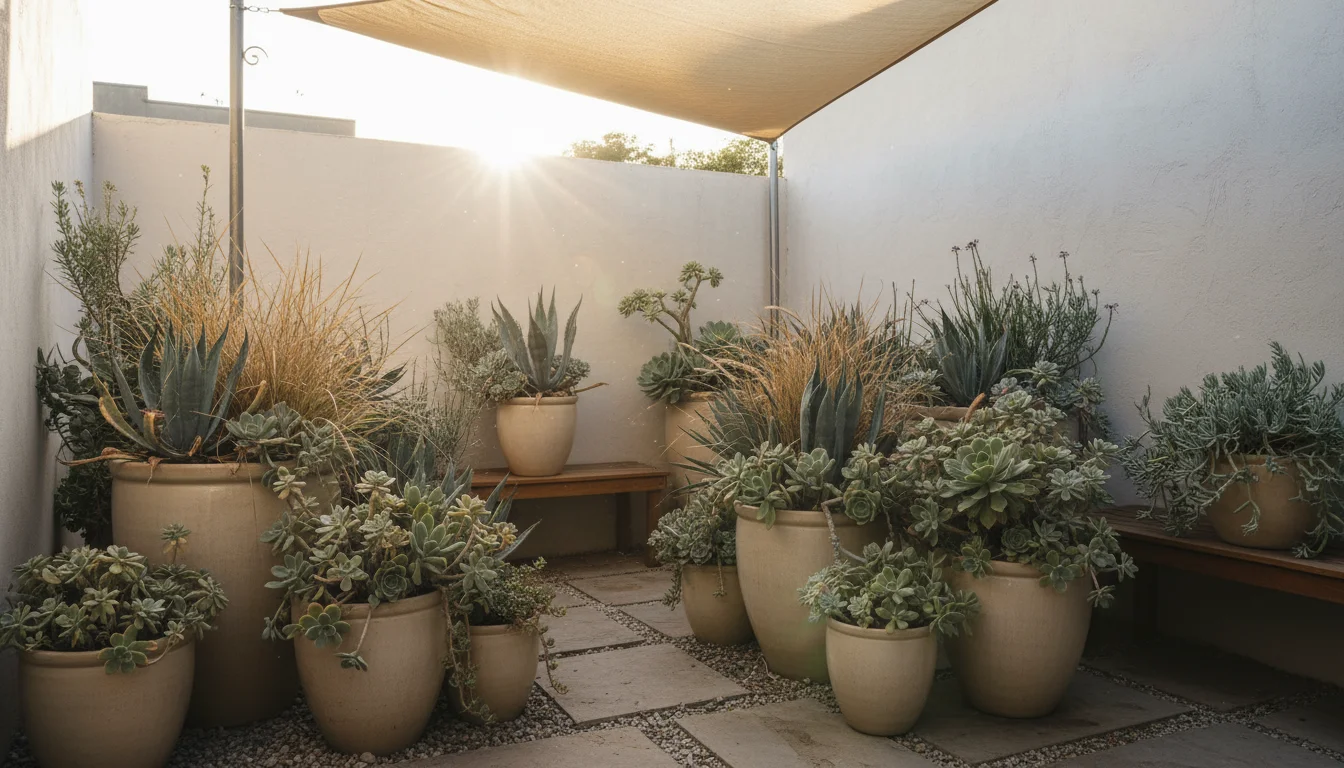
Heat Management Strategies
- Strategic Shading: Even `drought tolerant plants` can suffer in extreme heat. Use shade cloth or strategically placed taller plants to create partial shade during the hottest parts of the day. Portable shade structures work well for `xeriscape container` gardens. You reduce heat stress and water loss.
- Container Clustering: Group containers together. This creates a mini-microclimate that provides mutual shading and reduces soil temperature fluctuations. The combined foliage also slightly increases humidity around the plants. You create a cooler, more stable environment.
- Light-Colored Containers: Dark containers absorb more heat, leading to hotter soil and faster moisture evaporation. Choose light-colored pots to reflect sunlight and keep roots cooler. You reduce root scorching.
- Watering at Dawn: Water deeply in the very early morning. This allows the water to soak in before the sun causes significant evaporation, and plants can absorb moisture before the day’s heat sets in. You maximize water uptake.
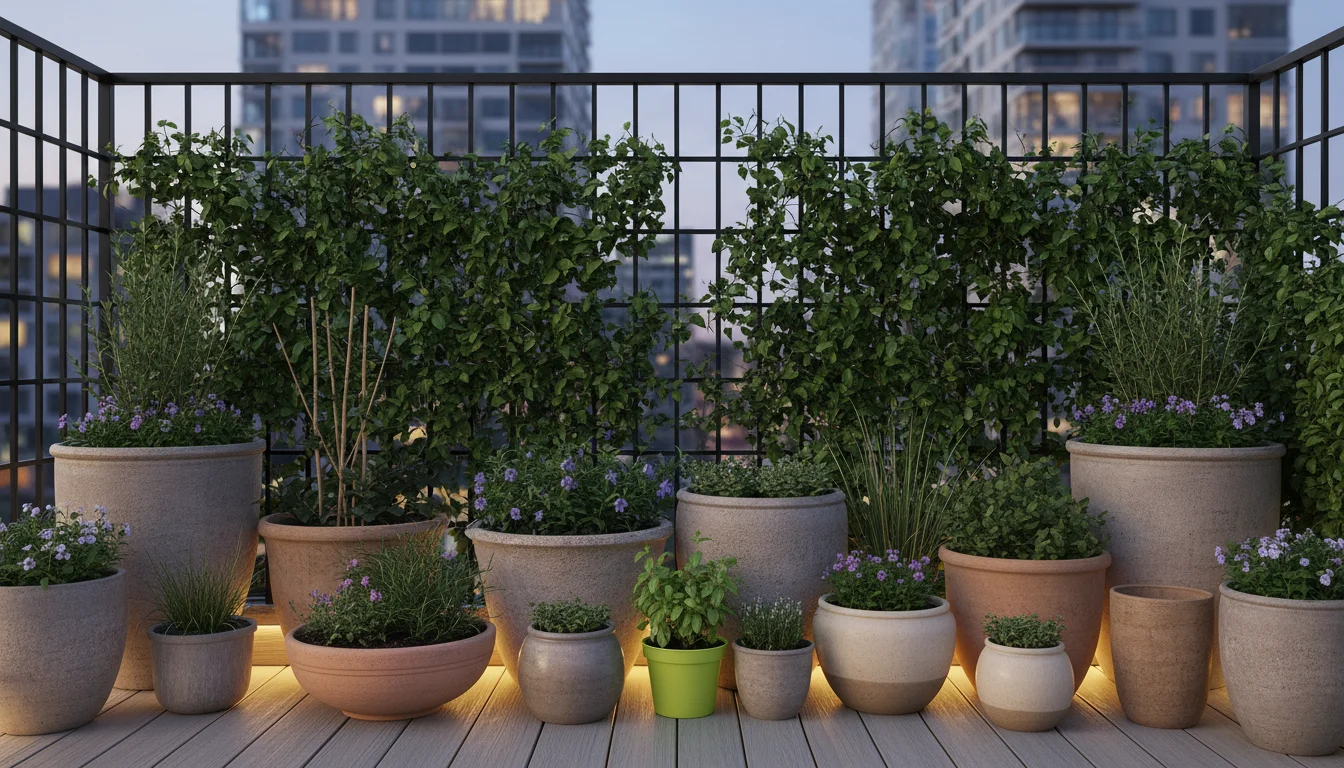
Wind Protection
Wind desiccates plants and can cause physical damage, especially in exposed balcony or rooftop gardens.
- Windbreaks: Install a trellis with sturdy vines, a screen, or even strategically placed taller, bushy plants to create a windbreak. This significantly reduces wind velocity hitting your garden. You shield your plants from damaging gusts.
- Heavy Containers: Use heavier pots (ceramic, concrete) or add ballast (rocks at the bottom of plastic pots) to prevent containers from tipping over in strong winds. You ensure stability.
- Cluster and Secure: As with heat, clustering containers helps. You can also physically secure containers to railings or other sturdy structures. You prevent damage and loss.
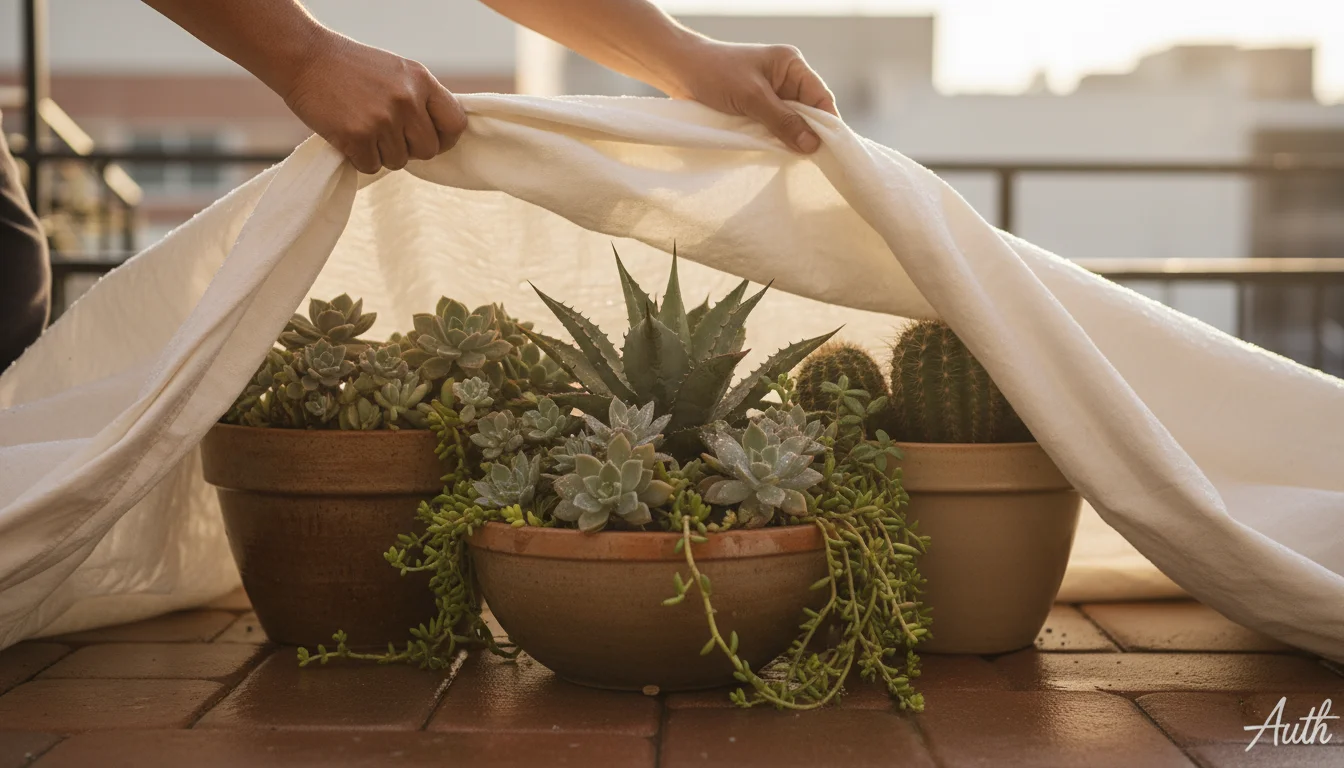
Frost Protection for Unexpected Cold Snaps
Even in typically warm climates, unexpected cold snaps can occur.
- Move Sensitive Plants: For `xeriscape container` gardens, the easiest method is to move sensitive plants indoors or to a sheltered location (garage, covered patio) when frost is predicted.
- Cover Plants: For plants that cannot be moved, cover them with frost cloth, old sheets, or blankets. Remove covers in the morning as temperatures rise to prevent overheating. You create a temporary insulating layer.
- Water Before Frost: A well-watered soil retains heat better than dry soil. Water deeply a day or two before an anticipated frost. You help warm the root zone.
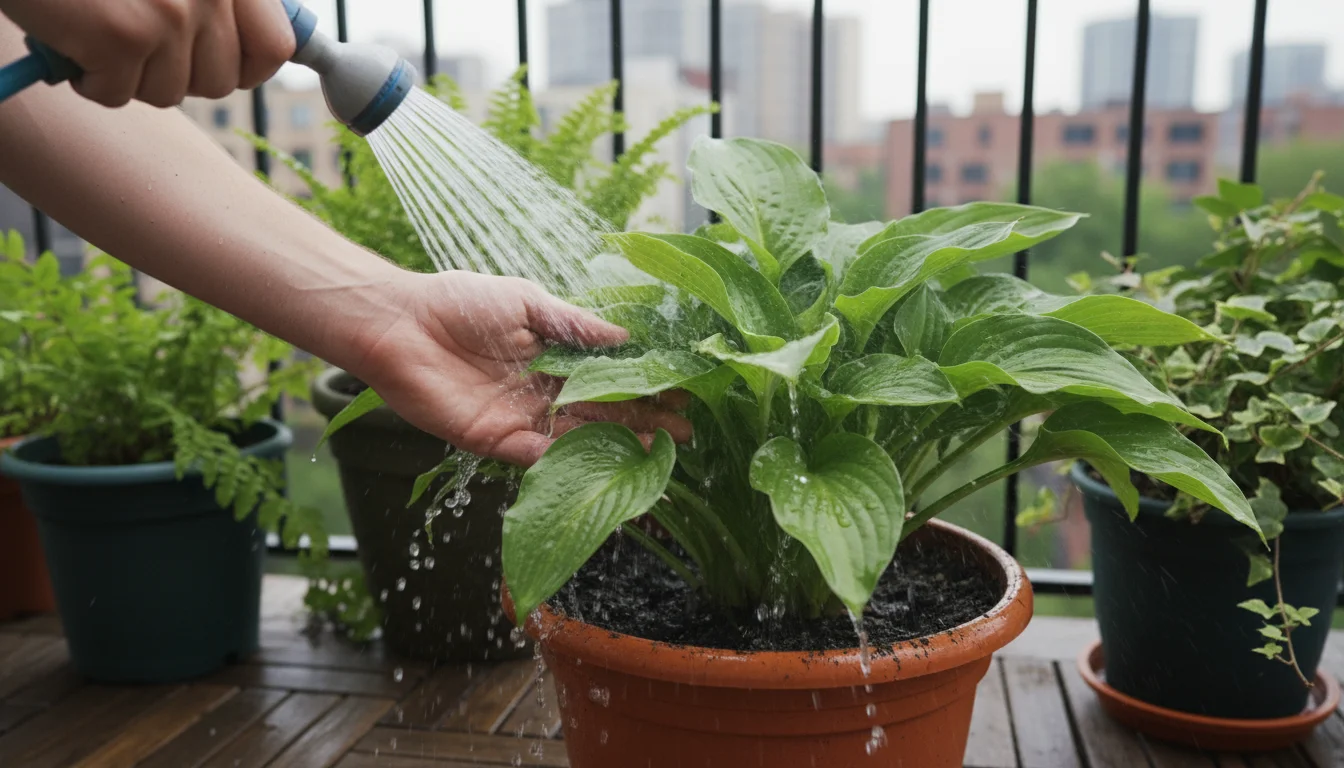
Addressing Wildfire Smoke and Air Quality
Wildfire smoke can impact plant health by blocking sunlight and depositing ash.
- Rinse Foliage: After a smoke event, gently rinse plant foliage with water to remove ash and particulate matter. This allows leaves to photosynthesize more effectively. You clean your plants for better health.
- Monitor Watering: Reduced sunlight from smoke cover means plants may use less water. Adjust your watering schedule to prevent overwatering. You adapt to changed conditions.
By proactively addressing these environmental challenges, you ensure your water-wise garden remains robust and beautiful, offering a resilient green space in a changing world.
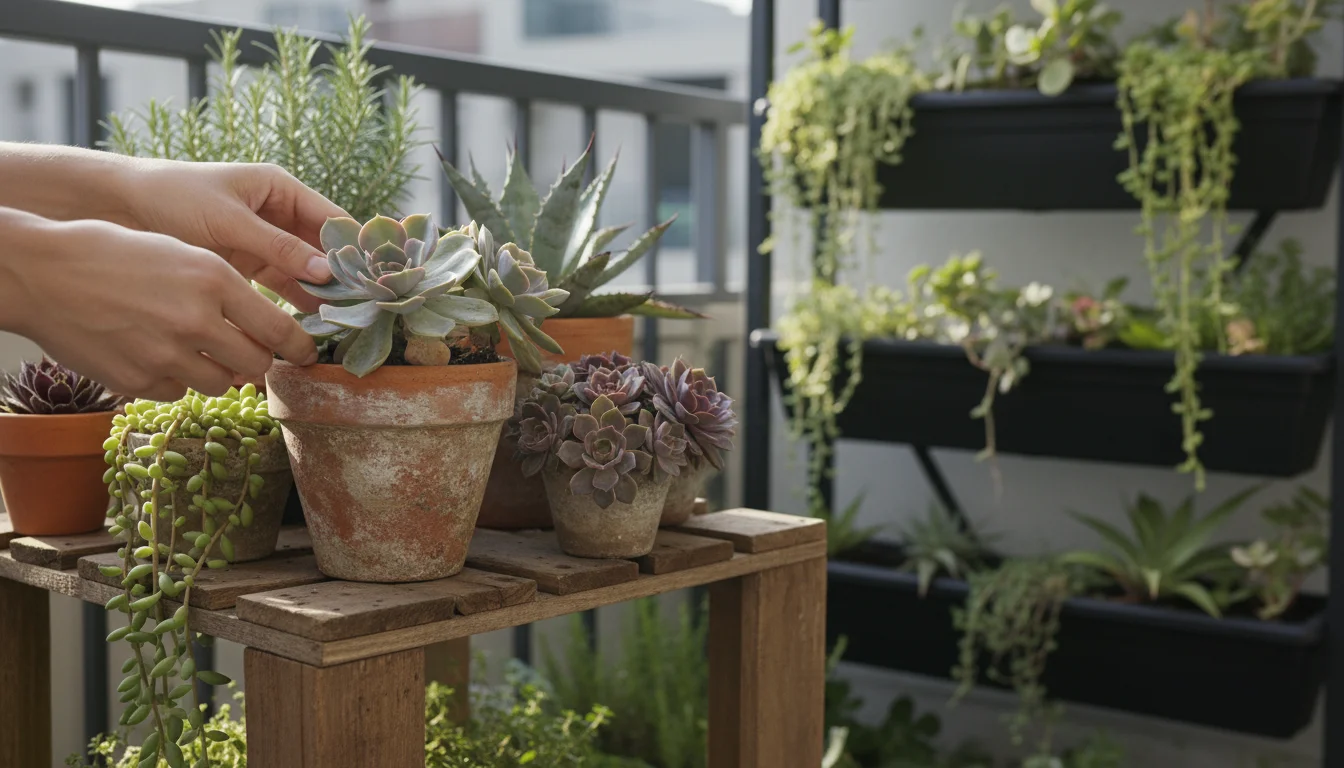
Frequently Asked Questions
Can I really xeriscape a small balcony or patio?
Absolutely. Xeriscaping principles apply perfectly to small spaces. Focus on selecting appropriate drought tolerant plants for containers, using water-wise irrigation methods like deep watering and mulching, and improving your soil’s water retention. You adapt the core ideas to your specific footprint, creating an efficient and beautiful water wise garden.
What are the best types of containers for a xeriscape container garden?
Opt for containers made of glazed ceramic, plastic, or metal, as these materials retain moisture better than porous terracotta. Choose larger, deeper pots whenever possible, as they hold more soil and, therefore, more water, reducing your watering frequency. Always ensure your chosen `xeriscape container` has adequate drainage holes.
How often should I water drought tolerant plants in containers?
Water deeply but infrequently. This encourages deep root growth and makes plants more resilient. Check the soil moisture by inserting your finger about 2-3 inches deep. If it feels dry, then water thoroughly until water drains from the bottom. The exact frequency depends on plant type, container size, and weather conditions, but it will be much less often than traditional container gardens.
Do I need special soil for a water wise garden in containers?
Yes, healthy soil is crucial. Use a high-quality, peat-free potting mix amended with ample organic compost (20-30 percent of the volume). Compost significantly improves water retention and provides slow-release nutrients. For succulents and cacti, add perlite or pumice to enhance drainage further. You create a soil environment that supports your `drought tolerant plants` effectively.
Can I still have colorful flowers in a xeriscape?
Certainly. Many `drought tolerant plants` offer stunning blooms. Examples include Lavender, Salvia, Coneflower (Echinacea), Sedum, and Portulaca. These plants provide vibrant color, attract pollinators, and thrive with minimal water once established. You do not sacrifice beauty for sustainability; you simply choose smart, colorful options.
